Dear creative friends,
Last month, we dove into the bold simplicity of ink—clean lines, confident marks, the beauty of going straight to the page. I shared how I’d been rediscovering my love for sketching, how freeing it felt to loosen my grip and just begin. What I didn’t expect was how that practice would gently lead me somewhere new… or maybe somewhere older, quieter, and deeply grounding.
This month, I’ve found myself more and more outside—sketchbook in hand, drawn to the small details around me. A sweet wildflower lit by the sun. The way the wind moves through the purple jacaranda trees. The swooping swallows against the pure cerulean sky. I’ve become quite enchanted by the act of field journaling. It’s not about creating something polished. It’s about presence. About recording what’s real, what’s right in front of you, and letting it be enough.
So this issue is a kind of natural next step—from bold strokes to curious observation. From making marks to making space for noticing. Field journaling invites us to slow down, look closer, and respond with pencil, pen, paint, or prose. It’s an old practice, but it feels entirely fresh—something we can all make our own.
Whether you’re traveling this summer, tending your garden, or simply sitting in a sunlit window, this month is about tuning in. Letting your sketchbook become a kind of companion. A place to gather impressions, colors, thoughts—whatever the world offers up when you really start to look.
Here’s to a season of observing, recording, and reconnecting—with nature, with creativity, and with yourself.
xo,

To be genuinely present, observing, documenting, and beautifully representing one’s surroundings is a keystone of the artist’s way. These qualities, even the beauty bit, are also foundational to scientific discovery and underpin our knowledge and documentation of the natural world.
Throughout history, there have been keen observers who pursued naturalist interests and whose field journals have become treasures not only for scientists and artists but for humanity as a whole. Join me in exploring the history of creators who made an art of the scientific practice of observation, blurring the line between that which is necessary, functional, and objective, and that which is beautiful. Let’s examine how the rich tradition of field journaling connects us to our past and inspires us for the future.
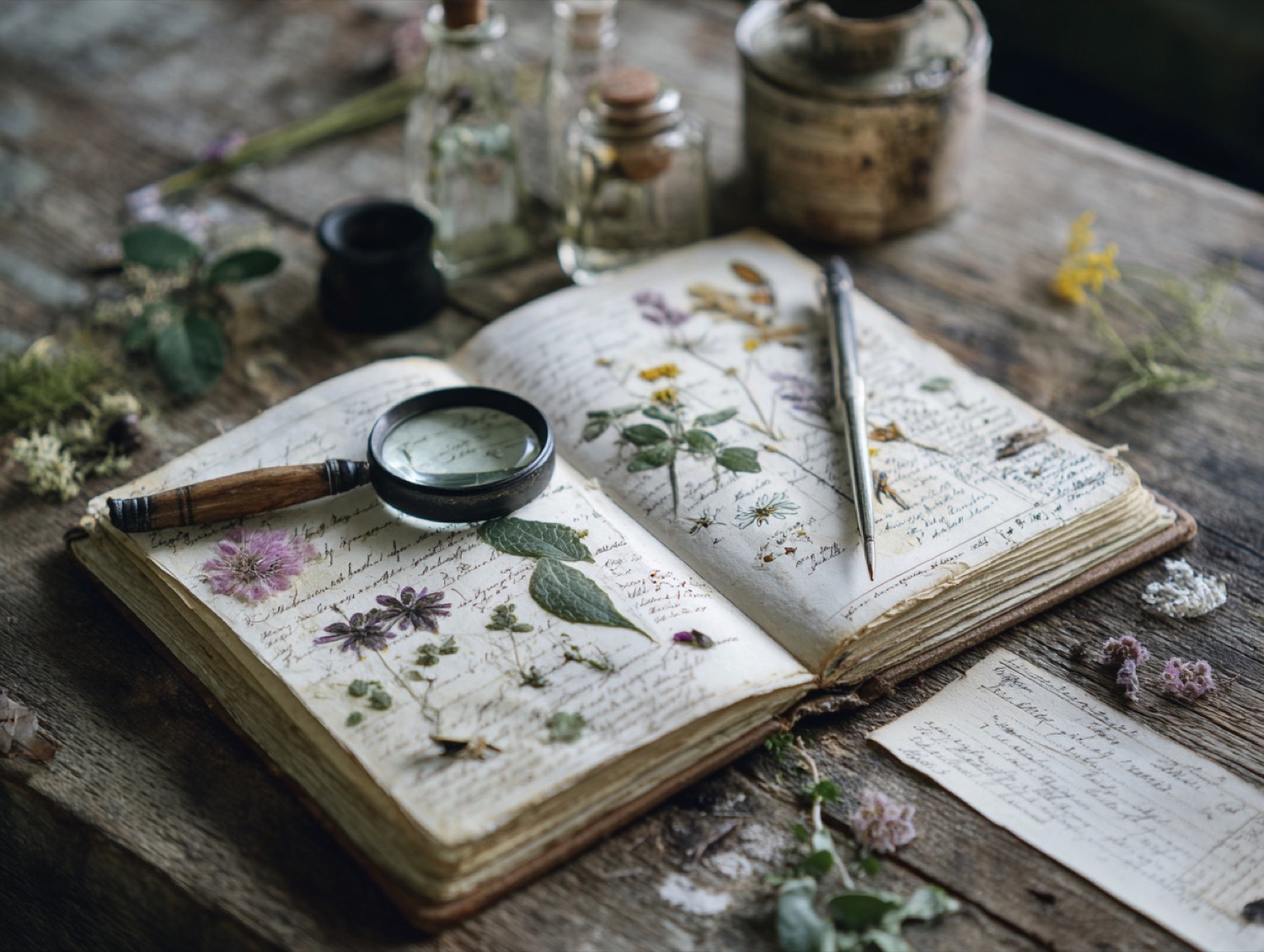
Humans have been documenting their surroundings for a very long time. In fact, the case can be made that cave paintings were the earliest field journals, an effort to depict information, convey symbolic import, and share aesthetic pleasure with others. Massive sites like the Neolithic Twyfelfontein in Namibia contain images that share many details about the area, from maps to animals to apparently ritualistic scenarios that could well have served the same function as field journals documenting salient features of lived experience.
Fortunately, with the passage of time and the advent of paper and pen, the materials for documenting the physical world became more portable. For many of us, that is what the field journal stirs to mind: the picture of an intrepid explorer out on the high seas or crossing treacherous terrain, all the while feverishly sketching and jotting down notes to capture all the novelty they encounter.
From the world-altering musings of Darwin scrawling, “I think” above a sketch of a branching tree of evolution to the manifest feminism of Marianne North, who chose to travel the world alone and draw from experience rather than from the drawing room, these journals convince us that what happens in the field might just ring throughout history.
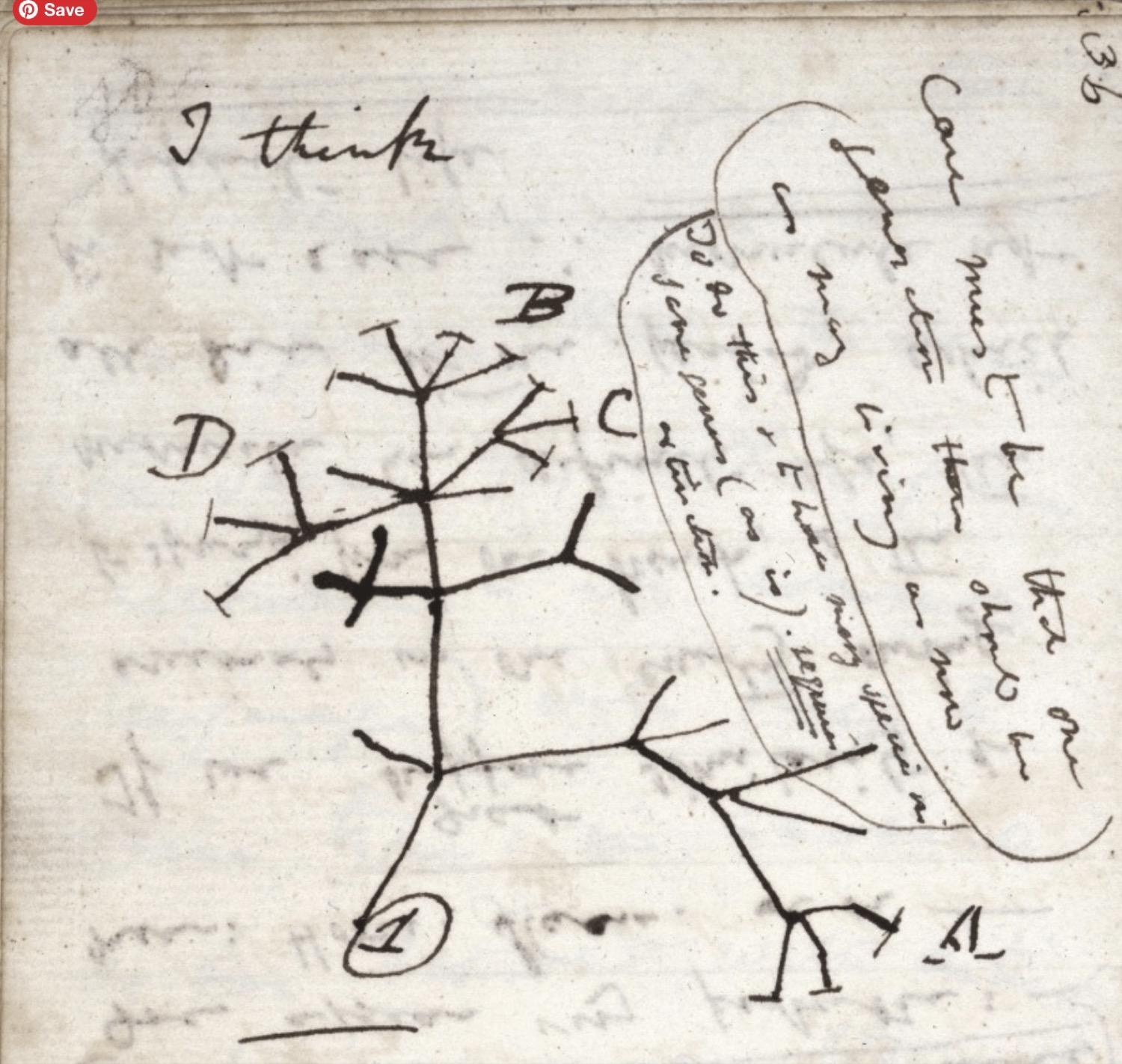
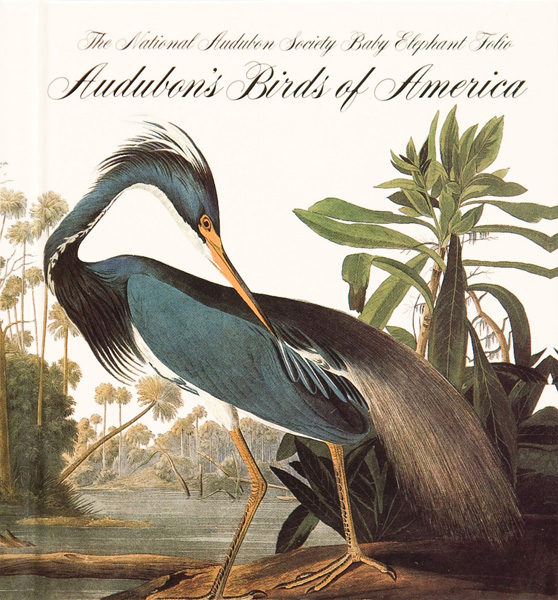
Although Darwin’s process of discovery reigns supreme in the annals of science, another set of field journals worthy of notice is those of Alexander von Humboldt. Nine leather-bound gems spanning six years of travel from Europe across the Atlantic and throughout the Americas give us a window into the world at the frontier of the 18th and 19th centuries. These pearls of discovery were dear to him for the remaining fifty years of his life.
They provided a treasury of scientific knowledge via maps, charts, drawings, and minusculely written words in hand-mixed ink. They also form the bedrock from which his illustrations, such as Naturgemälde (meaning "painting of nature," but also "unification"), emerged, giving image to his views on the interconnectedness of all life and earning him the designation of Father of modern environmentalism.
Another great naturalist and artist who leaned heavily on his field journals was John James Audubon. He explored the wilds of rural America and avidly sketched the animals he encountered there. Even when using specimens for his paintings, he placed them in their natural settings, eschewing the artificial postures depicted by his contemporaries. The impact of his work on ornithology is indisputable, though the veracity of some of his observations has been challenged. Likely, his errors are a product of his devilishly pranking rivals with non-existent specimens or aggrandizing the traits of birds to gain subscribers for his self-publishing efforts, as it is unlikely that the meticulous Audubon fell victim to mistakes in observation. Regardless, his masterwork, Birds of America, comprises one of the most stunning collections of naturalist paintings ever completed.
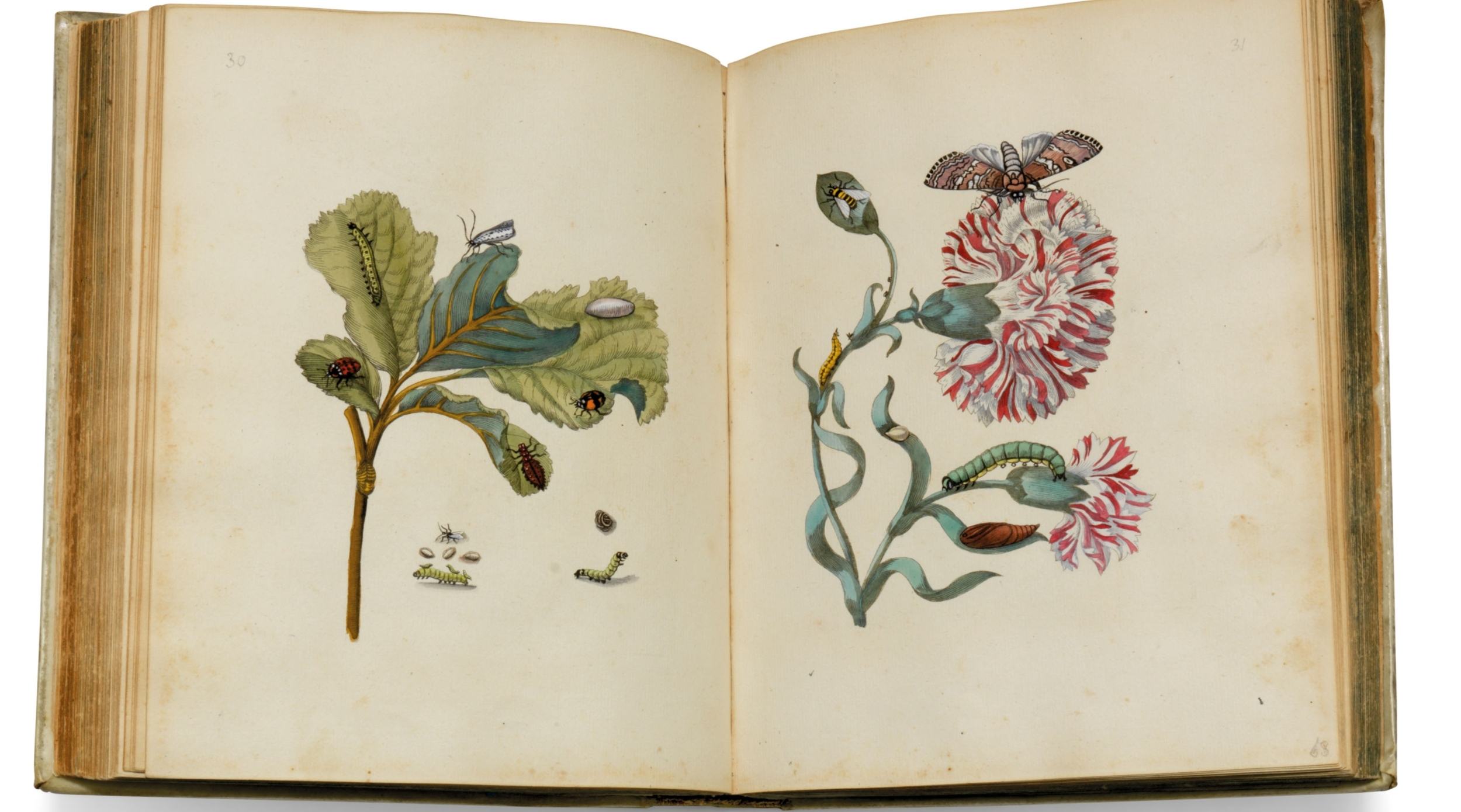
No discussion of field journals and naturalist art can conclude without mentioning a shining star of the genre, Maria Sibylla Merian. Considered by many to be one of the most exceptional botanical artists of all time, she is entitled to her own chapter. Her work helped pave the way for other female artists, from Elizabeth Blackwell to Beatrix Potter. Even today, contemporary artists such as Janaina Tschäpe cite Merian as an inspiration to break with tradition, embrace a love of nature, boldly explore themes of life and death, and venture out into the field to gain firsthand experiences and revel in getting their hands dirty.
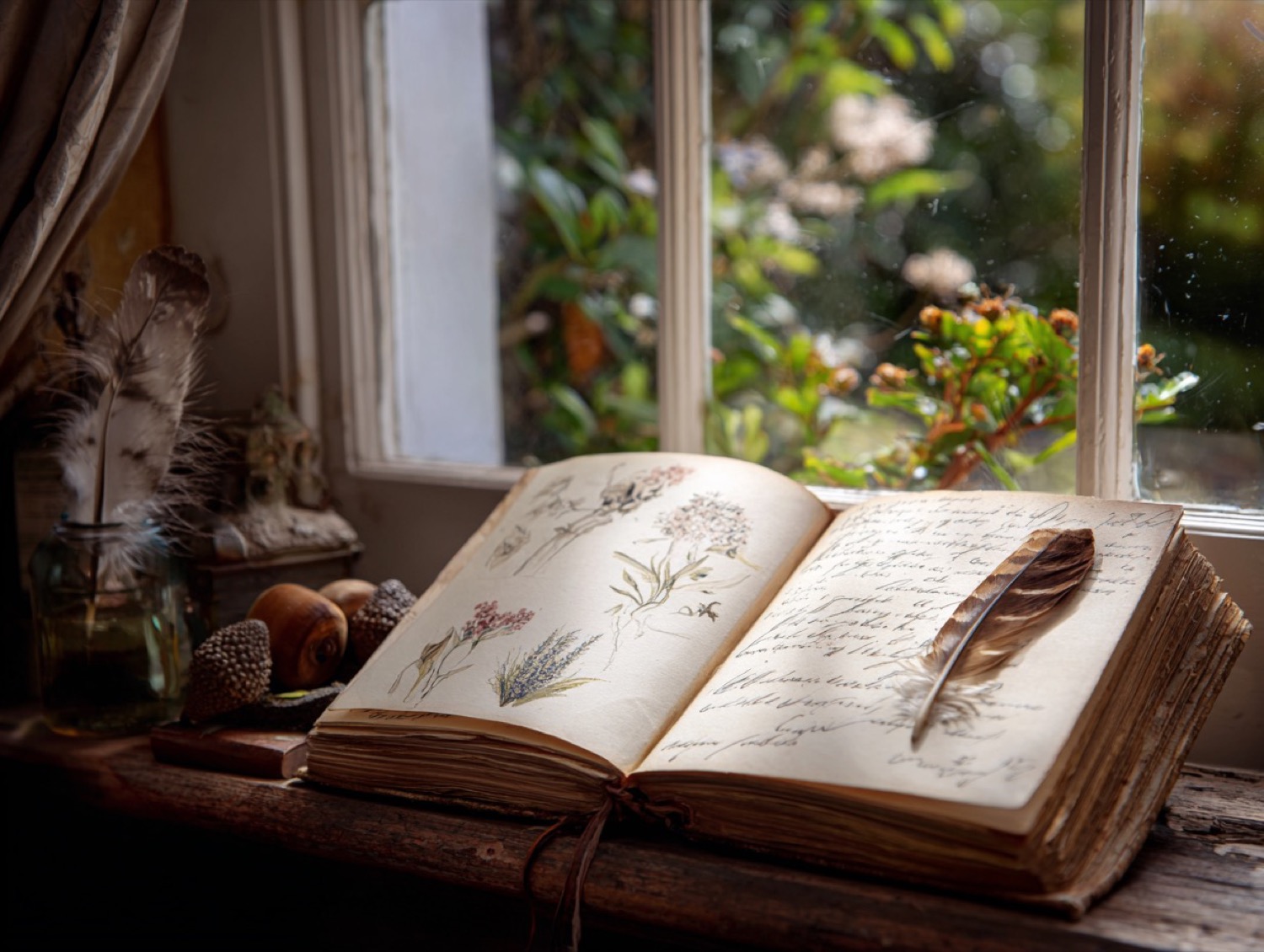
Field journals are a place where discovery resides. The act of being in the world, exploring the unknown, viewing keenly, and documenting profusely helps us create something lasting from the ephemeral. They encourage us to embrace our wanderlust and capture, for posterity, what we observe in our surroundings, allowing us to see and share in new ways.
Throughout history, those who have ventured boldly into the world, leaving their comfort zone behind and paying close attention to all they encounter, have invariably brought great beauty and discovery home with them.
The field journal, regardless of what sets its creators out on the road, serves as a bridge between the internal and the external, the objective and the numinous, the scientific and the anecdotal. It helps us see the beauty through the eyes of the beholder and reveals the artist within each of them, which speaks to the same in us.
In our frenetic world, where information ambushes our senses from the moment we tap our devices, there is something powerful about stepping out of the stream of digital data and into the physical domain. Being present in the here and now and tuning into our surroundings is becoming a radical act as demands on our attention increase in frequency and intensity. By demonstrating to ourselves that we value what’s in front of us, we open the door to new possibilities as artists and as people.
What does it mean to go into the field and truly take in what we encounter there? What might we discover if we peel back the layers of distraction and truly focus our attention on the present moment? With a bit of care and a pinch of intention, we can foster an attitude that transforms our sketchbook into a guide, heightening our awareness and transforming our observations into an artful practice.
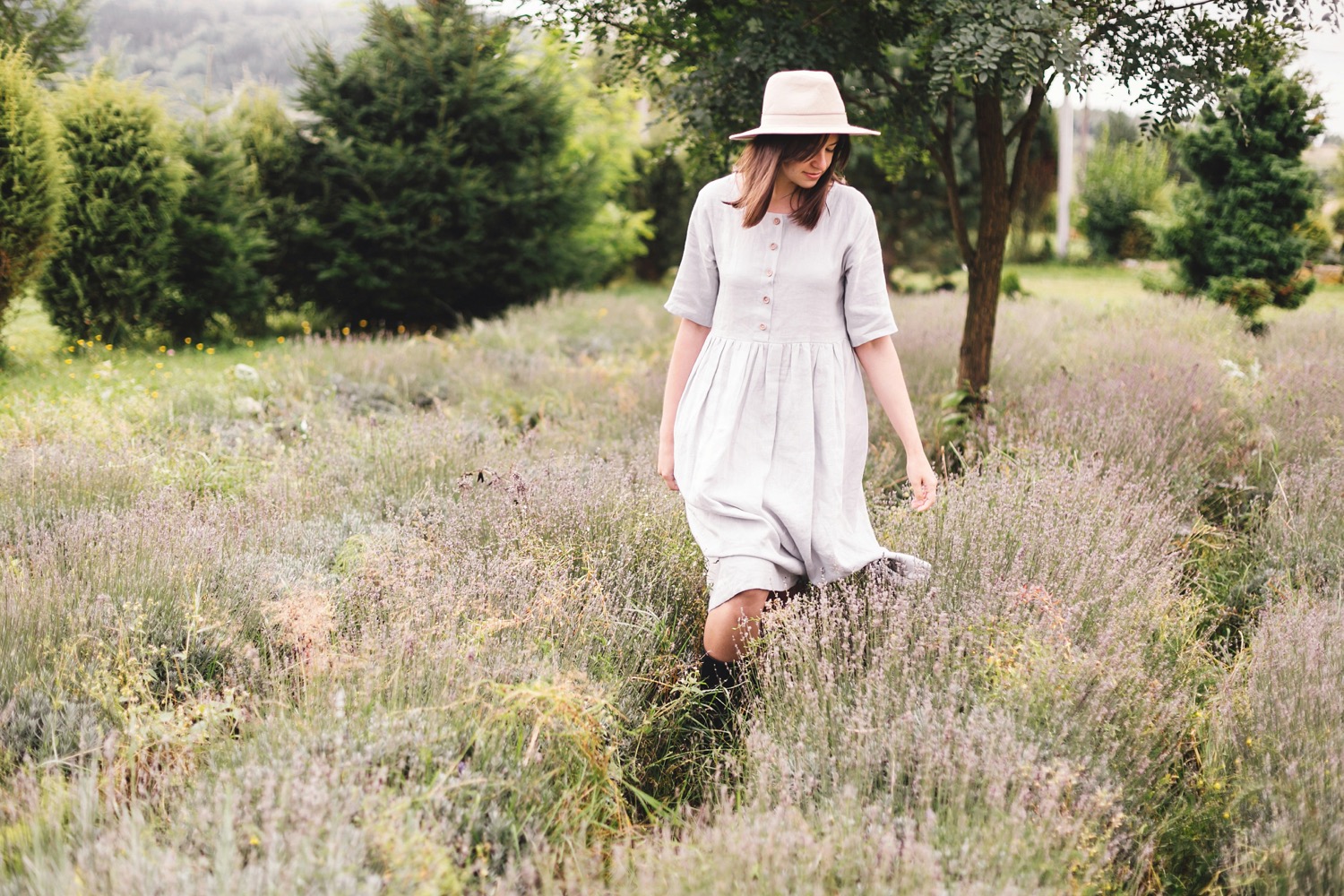
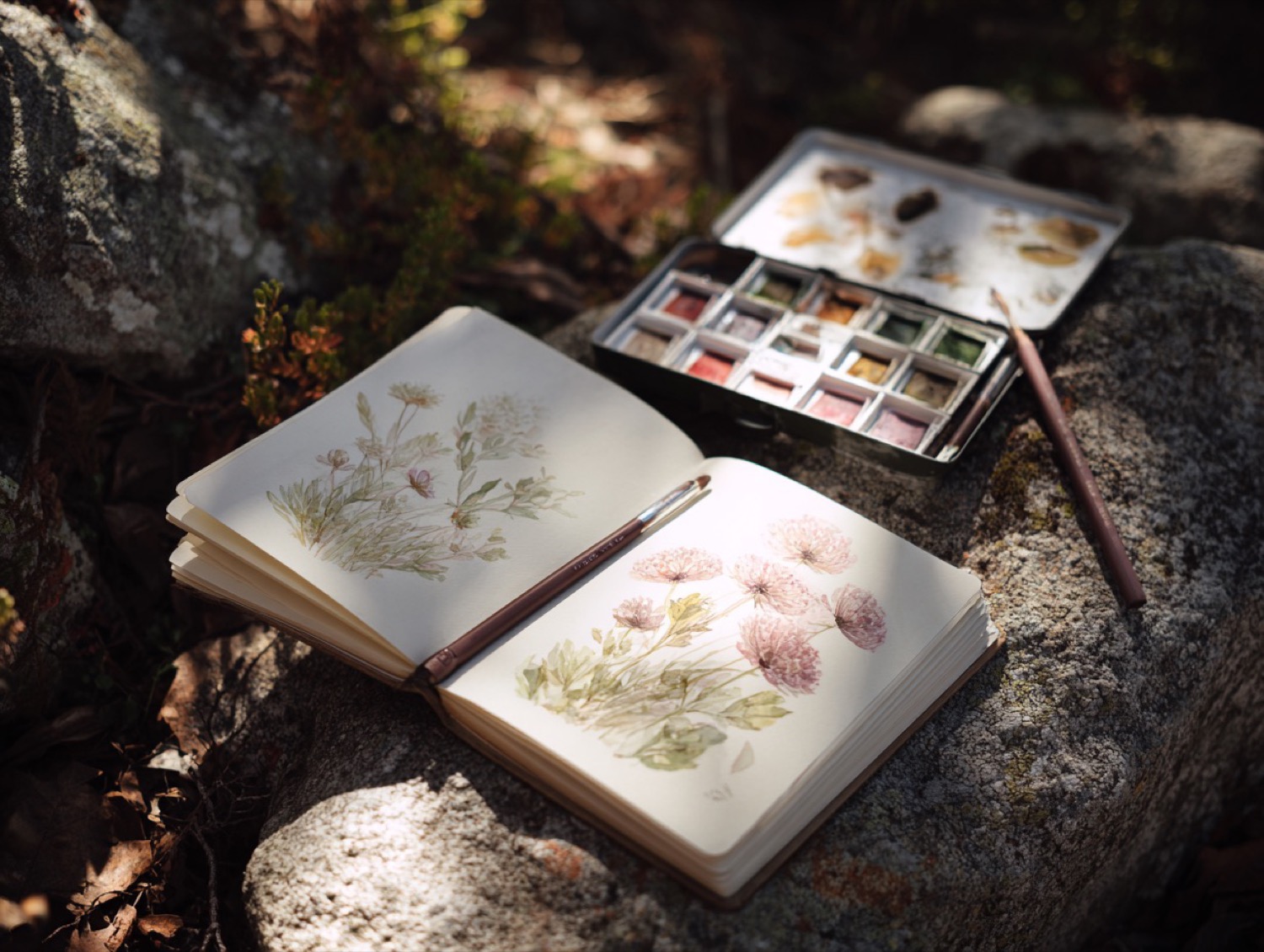
It begins with a question: What am I seeking? Answering this will set you in a chosen direction. Taking your sketchbook into the world is an act of exploration, so it helps to ponder what you hope to discover. It doesn’t need to be rigidly precise; it’s just a call to action, a tuning to what brings your attention to life. You’re more likely to tap your powers of observation if your interest is fully engaged.
Once you’ve got a destination, a mindset, and an orientation, it’s time to get your tools in order. What does your field journal need to look, feel, and carry within it to provide the space for your explorer documenter self to act freely? How big is it? What weight is the paper? Is there a pocket for pens, pencils, chalk, pastels, or portable watercolors? What color is it? How is it bound?
For example, you might, like explorers of yore, carry a small, brown, leatherbound book with heavy paper and a sleeve for your fountain pen and head out on a sailing expedition from Brittany after a pint of cider and a sing-along sea shanty. Or, perhaps, you clutch an oversized folio under your arm as you run to catch a train equipped with watercolors and a zeal for capturing landscapes. Or, maybe, you jump in your car with a canvas bag carrying your trusty marble notebook and set of charcoal, alongside your faithful number two pencil, heading for a destination unknown.
It doesn’t matter if your sketchbook is bound in velvet or paper, your implement is a pencil or paint, or your destination is a local park or Timbuktu. What’s important is that you are ready with all your faculties brought to bear on what you are experiencing and what is most salient to you about that experience. What matters is the attitude with which you observe and the reflections you open yourself up to. If you can look with genuine care and wonder at a single leaf, a humble earthworm, or a common dandelion, the beauty that will unfold for you is limitless.
The successful field journal is the one that travels with you frequently and gets used often. It will contain watermarks from being caught in a sudden deluge, drips of wax from a low-burning candle, wine drops from a tipsy moment of creative inspiration, and coffee rings from a misplaced mug of morning brew. More importantly, it will hold the reflections of many singular, unrepeatable moments, as well as the images that those moments brought to bear.
The goal of the sketchbook is to serve as a field guide for the artists we are, helping us to identify what matters to us and teaching us to hone our skills of vision and insight. Through the repetition of regular practice, our ability to observe and capture what we see becomes something we can rely on to offer up our own gorgeously unique view of the world. In the process, we draw more freely, express ourselves more accurately, and make an art of our daily life.
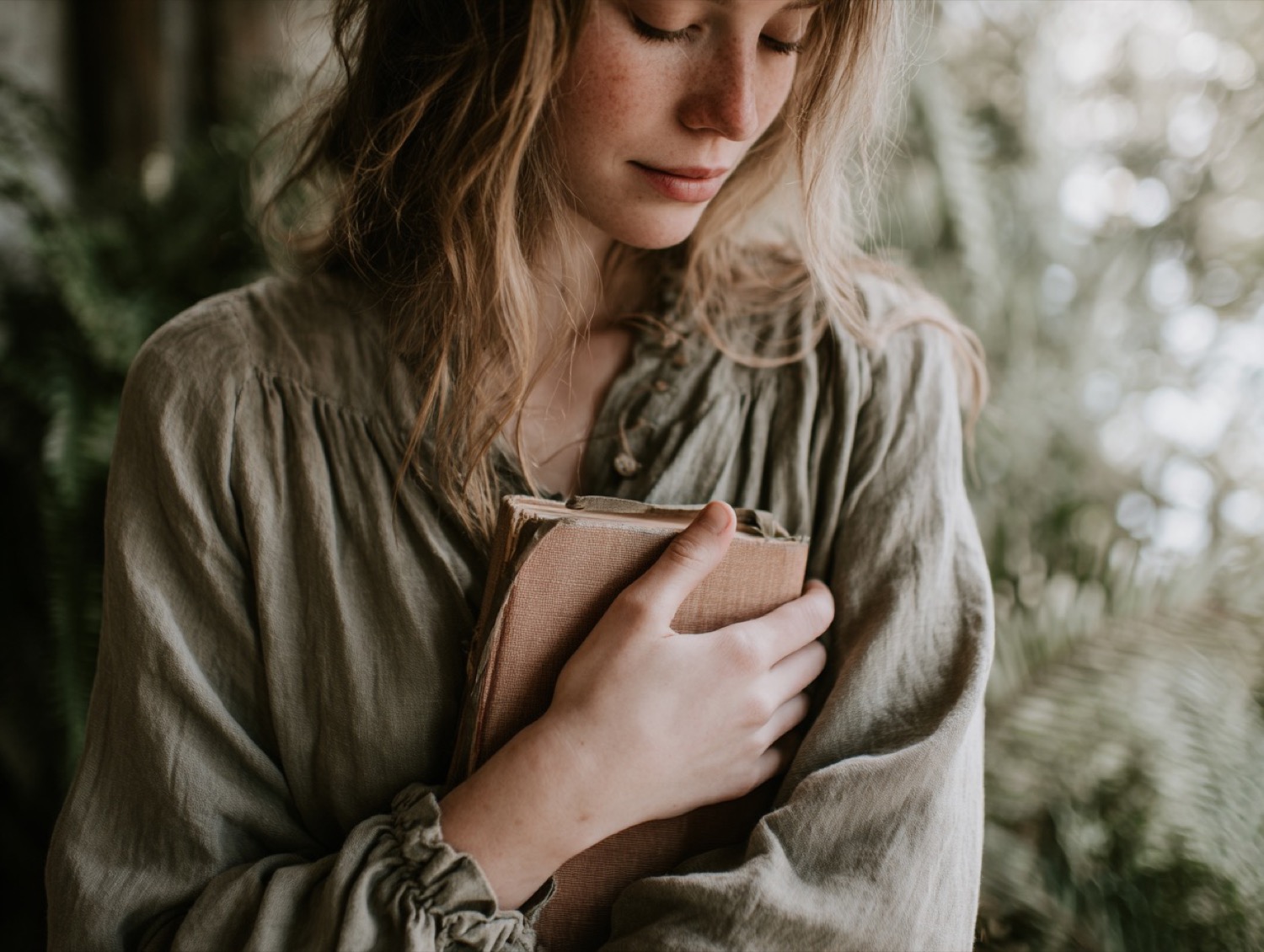
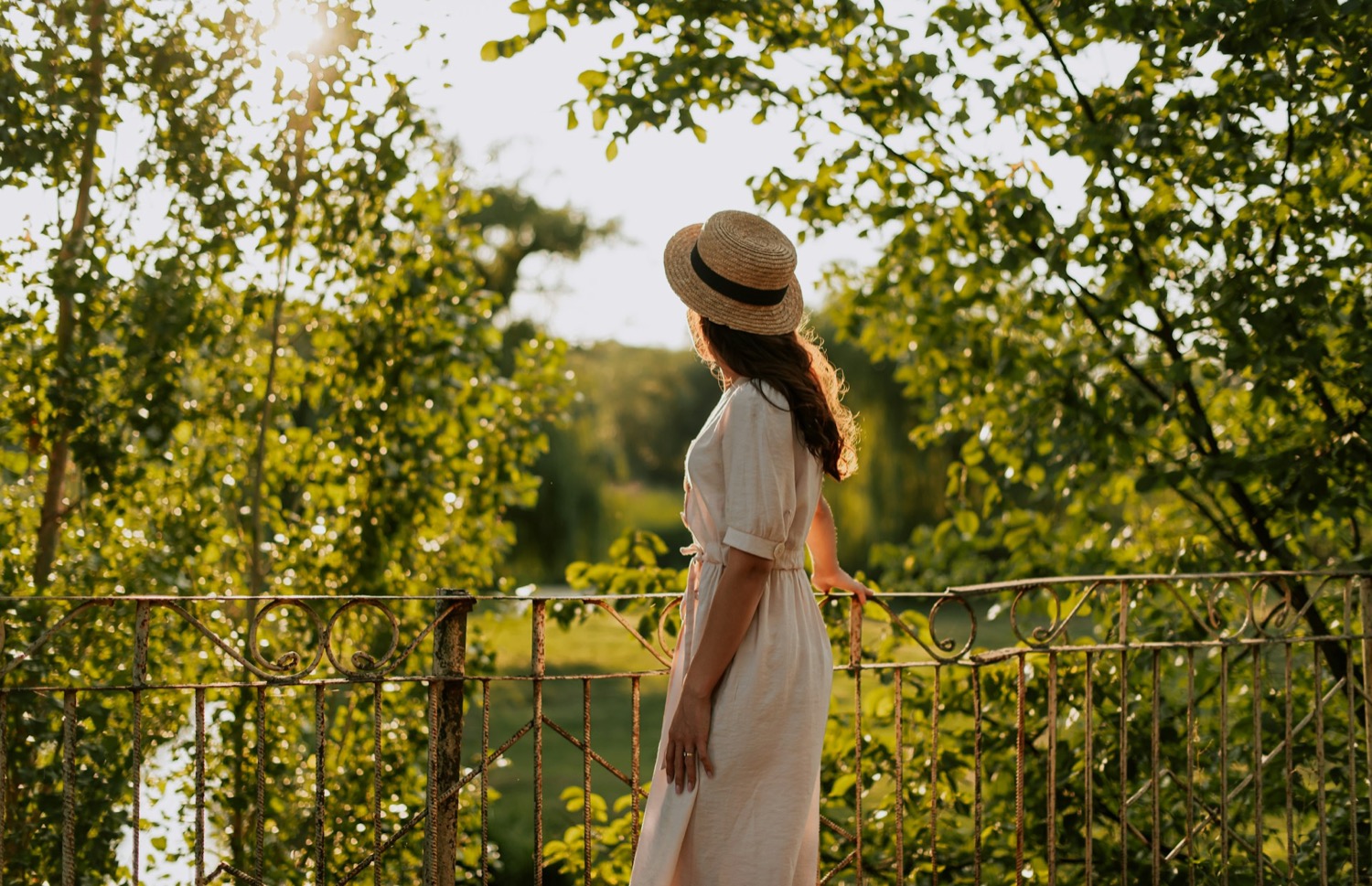
According to the Oxford English Dictionary, the word observe is defined as:
1. To notice or perceive something and register it as significant.
2. To watch carefully and attentively, especially in order to gain information.
In summer, the world hums a little louder. The days stretch long, and the details shimmer—leaves flutter, insects hover, shadows dance across warm stone. July invites us not just to move through the world, but to witness it. And that’s where this word meets us.
To observe is more than just looking. It’s paying attention with intention. It’s the pause before the sketch. The quiet note scribbled in the margin. The small moment held and honored on the page.
This month’s theme of field journaling lives and breathes through observation. It’s what transforms a walk into a wonder. What turns a travel sketch into a memory. What brings depth and richness to even the simplest marks in our journals.
Brave as a Creative Practice
Let’s stay with this for a moment.
To observe is to step into a space of quiet curiosity. It means letting go of assumptions and meeting the subject with fresh eyes. Whether we’re sketching a sprig of lavender, mapping a city square, or tracking the changing light in a room, observation is the anchor. It keeps us grounded in what is—and opens the door to creative interpretation.
Observation in art doesn’t have to be technical. It can be playful. Loose. Intuitive. Maybe it’s capturing the curve of a shadow. Maybe it’s noticing how a moment makes you feel and finding the color that matches it. Maybe it’s just sitting still long enough to realize the world is always offering something to draw.
When we practice observing, we’re practicing being present. And that presence? It’s where inspiration lives.
• What details have I been overlooking in my everyday surroundings?
• How might slowing down to observe shift the way I create?
• What happens when I draw something as it is, not how I imagine it?
You don’t have to go far to find something worth observing. Just step outside—or look around the room you’re in. Let the act of noticing be your first creative gesture.
Let’s tap into our creative intuition and do some self-reflective work inspired by our theme. Below you will see our month’s Oracle/Tarot card spread. But fear not, if you are not one drawn to using oracle or tarot cards, no worries, just use the accompanying reflective questions as writing prompts for your journals!
Here’s a four-card oracle card spread designed to tap into your creative intuition and our themes. This spread and its journaling prompts encourage reflection on the artist’s inner wisdom, the magic of inspiration, and the journey of trusting intuition in the creative process.
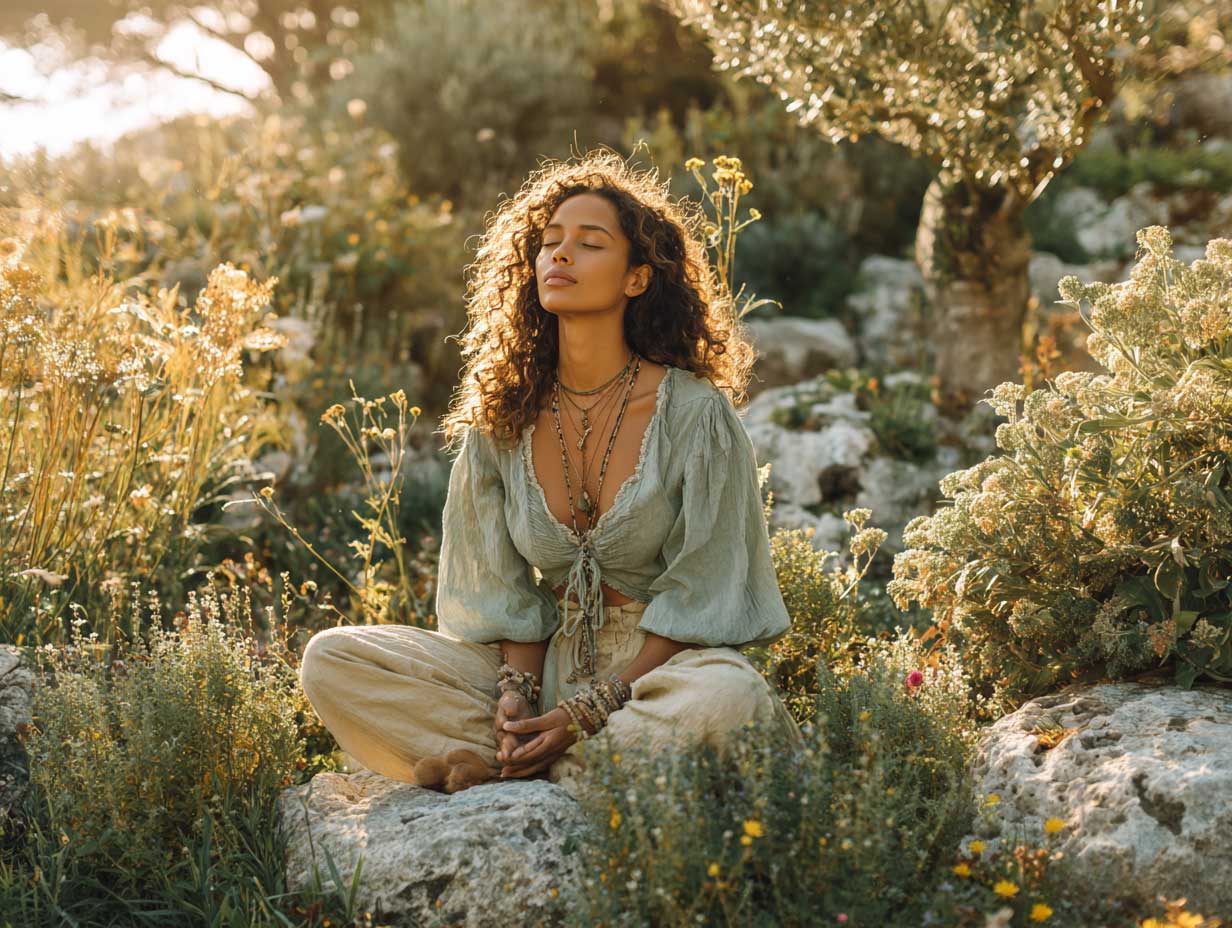
Treat yourself to this wonderful and powerful meditation from one of my favorite meditation creators - Rachel Hillary
Here’s a little more information from Rachel…
This guided visualization leads you to a vibrant and uplifting journey, to connect your roots with the roots of the earth, gaining sustenance, feeling nurtured, activating magic inside of you, and also giving back love to support the earth, and receiving the wealth of the earth in return. This visualization takes place on some beautiful red rocks, warmed by the sun. Immerse yourself in this meditation adventure. There is ample space to continue meditating to the music at the end if you choose.
I hope you enjoy, sending you love.
lots of love,
Rachel
Each month we will have a positive affirmation. I recommend you print out this affirmation and put it in your sketchbook or somewhere in your studio. Recite the affirmation out loud each time you show up to create. Saying words aloud is powerful and can begin to re-write some of our own limiting beliefs or calm our fears. Try it now…
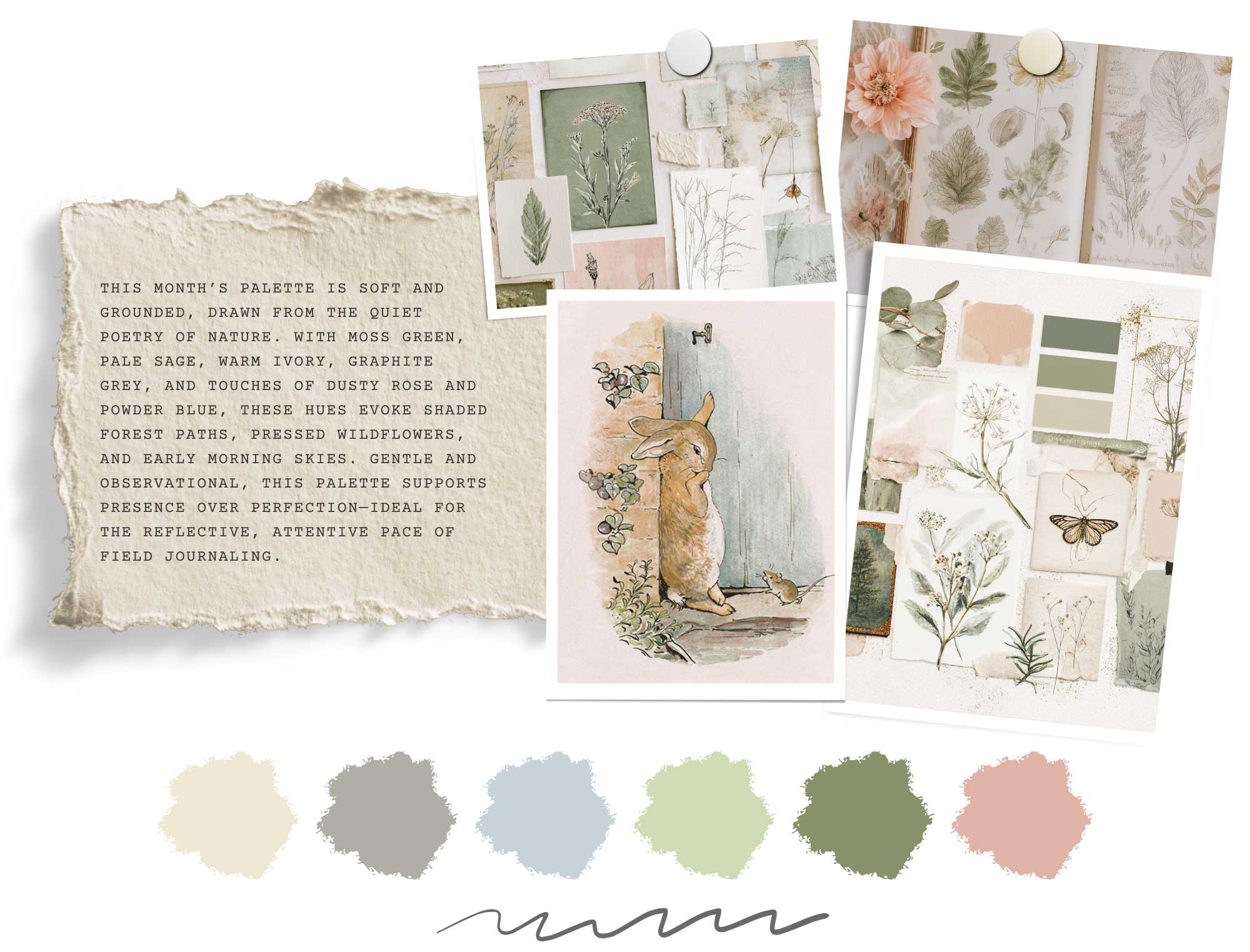
This month’s palette is drawn from the quiet poetry of the natural world. Inspired by the delicate observation practices of artists like Beatrix Potter and Maria Sibylla Merian, these colors feel like they’ve been lifted straight from the pages of a well-loved field journal.
We’re working with gentle greens, soft earth tones, and sky-washed blues—hues that don’t compete for attention, but invite it. Mossy green and olive leaf evoke shaded paths and pressed leaves. Pale sage gives us room to breathe. Warm ivory and graphite grey ground the page in the honest texture of sketchbook paper and pencil. And just a touch of dusty rose and powder blue add softness—like wildflower petals or morning light on water.
These aren’t colors that shout. They whisper. They wait. They ask you to slow down, to look again, and to capture not just what you see, but how it makes you feel.
As we step into the practice of field journaling, this palette supports presence, patience, and quiet discovery. It’s for pages filled with sketches, questions, notes in the margins. For swatches pulled from life. For entries that don’t need to be perfect—just true.
Let this month’s colors guide your eye gently outward, and your creative voice inward.
In the age of smartphones and instant reference photos, it’s easy to forget that some of the most profound scientific and artistic discoveries began with little more than a sketchbook, a quiet place to sit, and an attentive mind. Before field journaling had a name, two women—centuries apart—were already doing it. Observing, documenting, painting, and writing their way into a deeper understanding of the natural world.
This month, as we step into the rhythm of our own sketchbooks and slow walks, we pause to honor the lives and legacies of Maria Sibylla Merian and Beatrix Potter—two master artists who transformed humble field notes into lasting works of art and science.
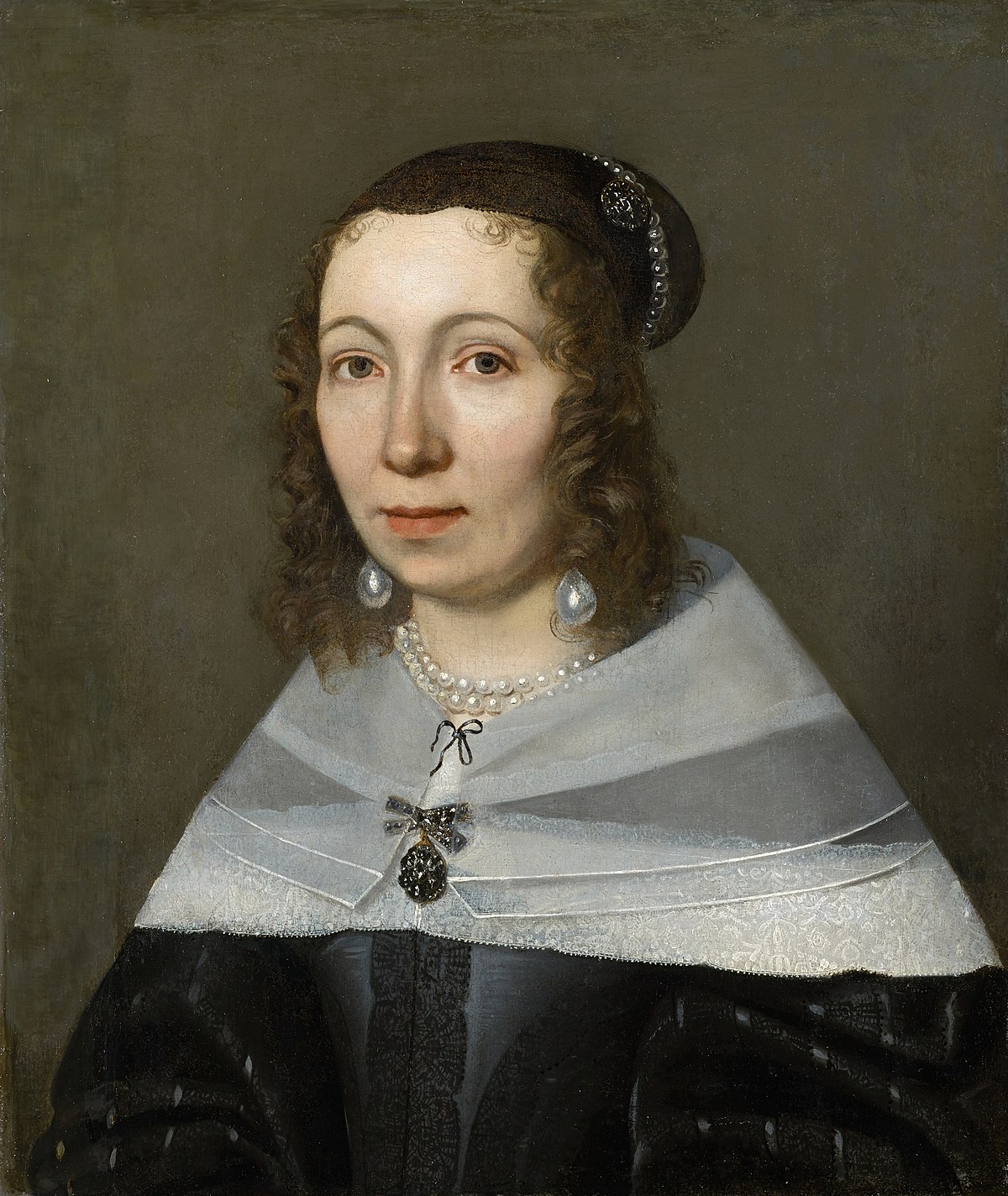
Naturalist, scientific illustrator, and courageous traveler
Born in Frankfurt, Germany, Maria Sibylla Merian was raised in a family of artists and publishers. From an early age, she showed a fascination with insects—particularly the way they transformed. At a time when the dominant belief was that insects emerged by “spontaneous generation,” Merian was carefully observing caterpillars, recording their development into butterflies with paint and ink.
By her teens, she was already making field observations and illustrations of the metamorphosis process, often sketching directly from life in gardens and fields. She published her first book of engravings, Neues Blumenbuch, at 28, followed by a major scientific work Der Raupen wunderbare Verwandlung (The Wondrous Transformation of Caterpillars), featuring detailed life cycles of insects paired with host plants—an innovation at the time.
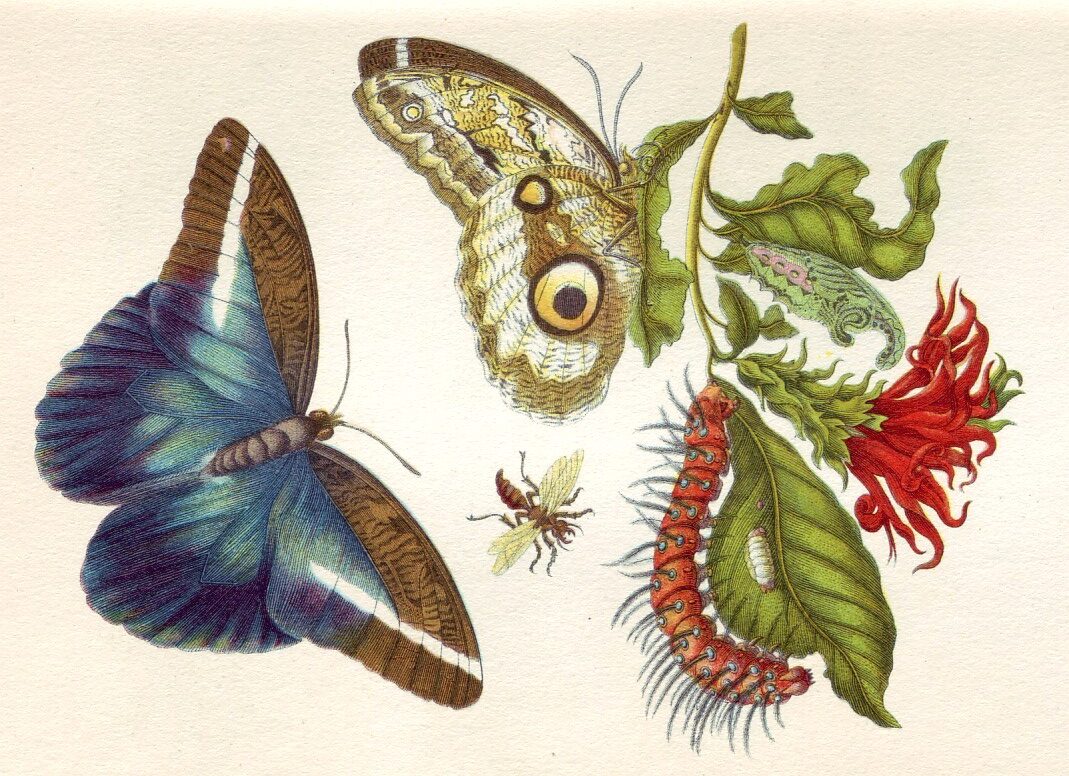
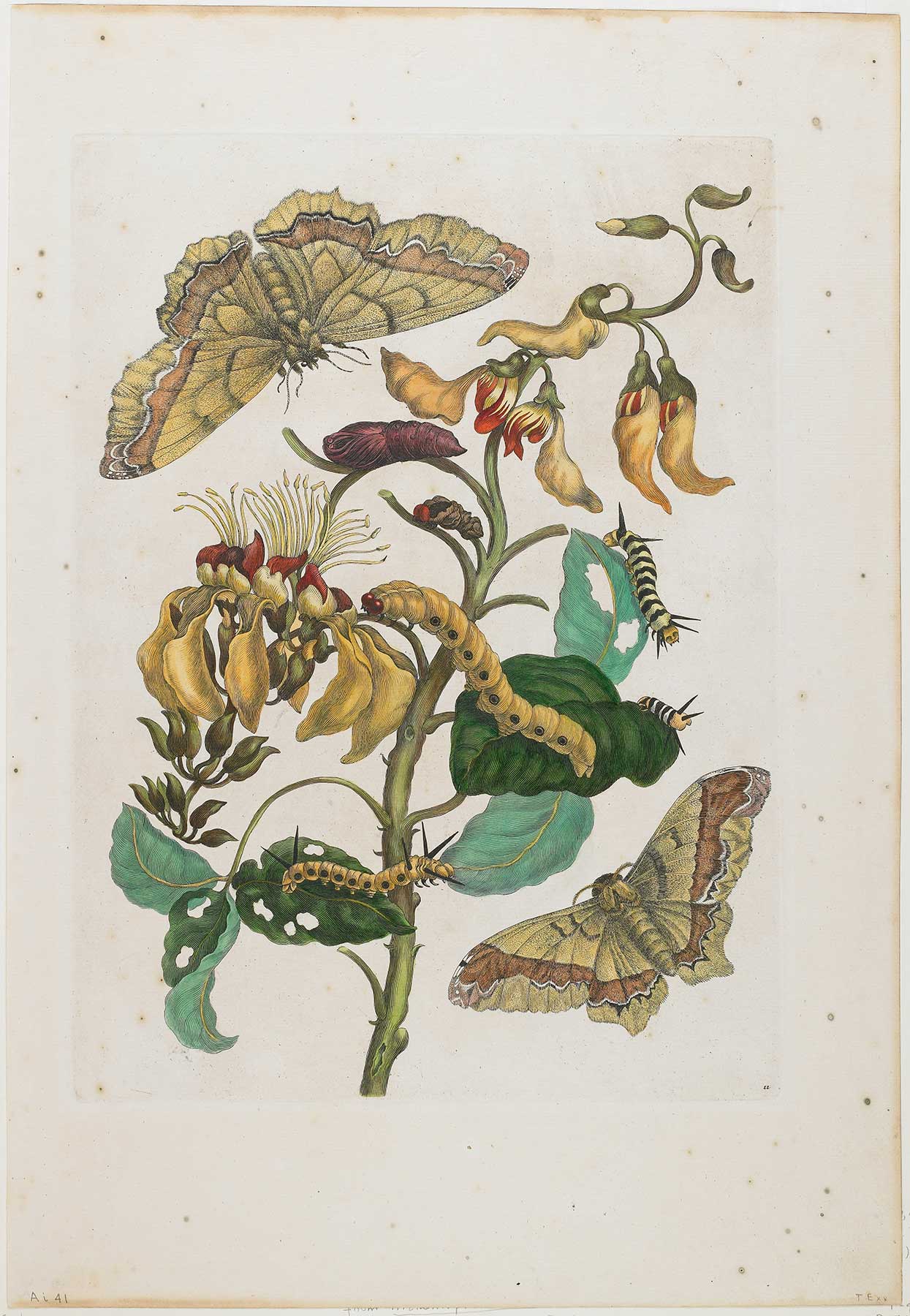
But perhaps her most extraordinary achievement came later in life. At the age of 52, she sold off much of her belongings and traveled—unaccompanied—to Suriname in South America to study tropical insects in their native habitats. She spent two years sketching, journaling, and collecting specimens in challenging conditions. The result was Metamorphosis insectorum Surinamensium, a stunning and groundbreaking publication that fused art, science, and field observation in a way the world had never seen.
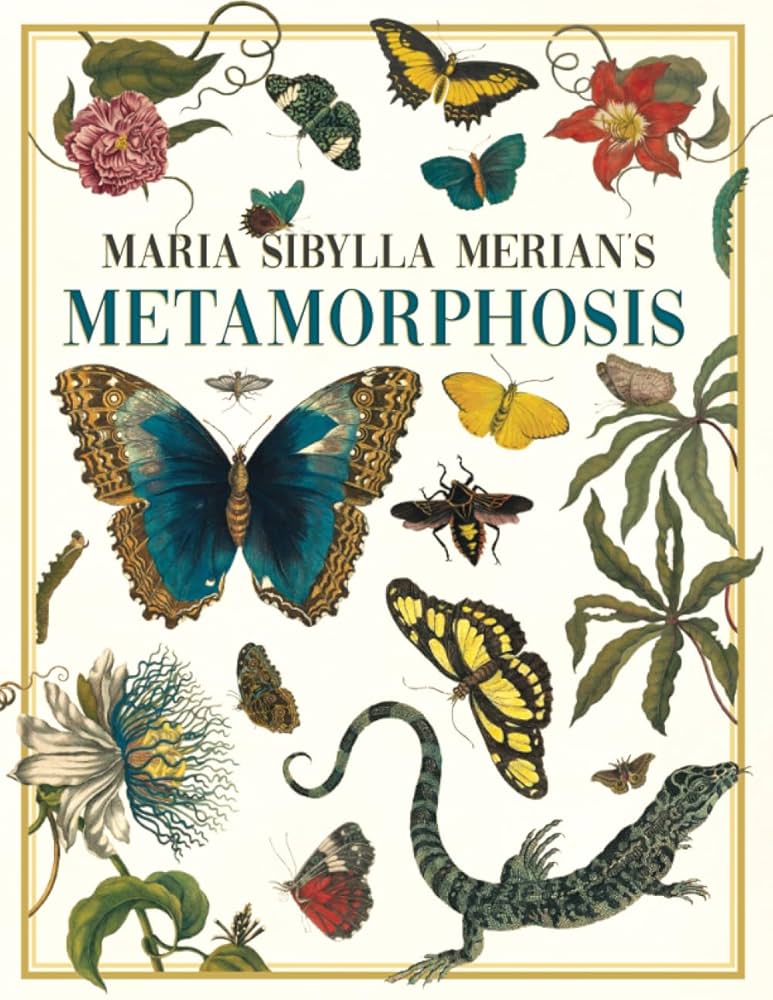
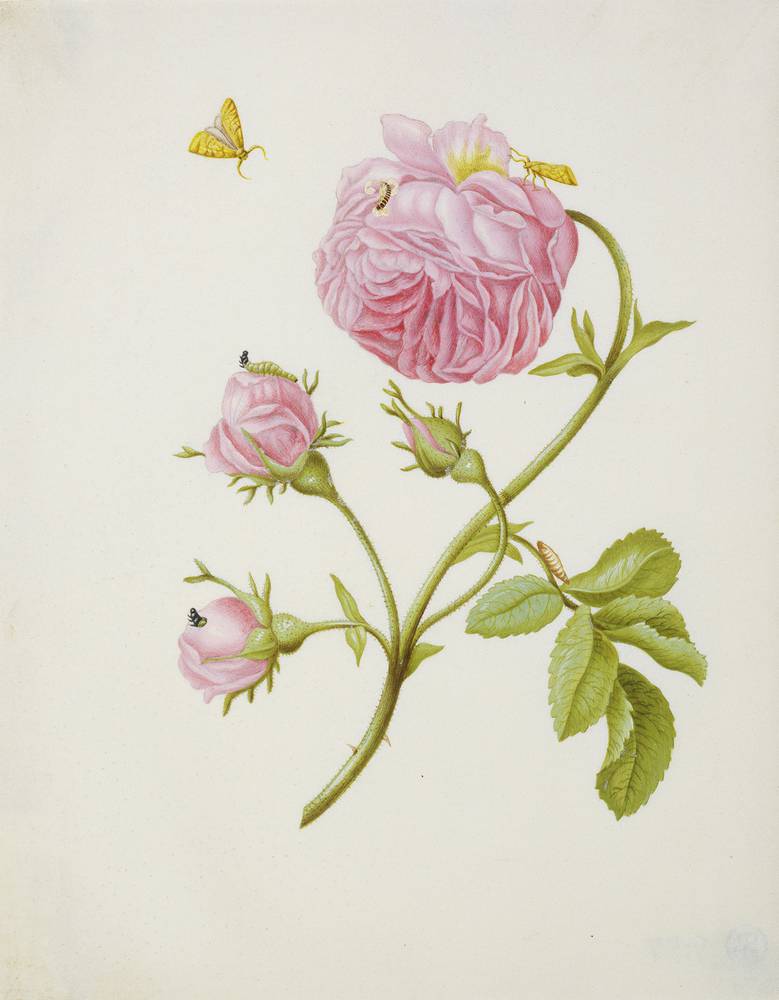
Merian didn’t just illustrate insects—she told their stories. Her work is a testament to the value of careful attention, deep patience, and the belief that observation is an act of reverence. Her legacy reminds us that our sketchbooks can be places of discovery, inquiry, and deep connection with the living world.
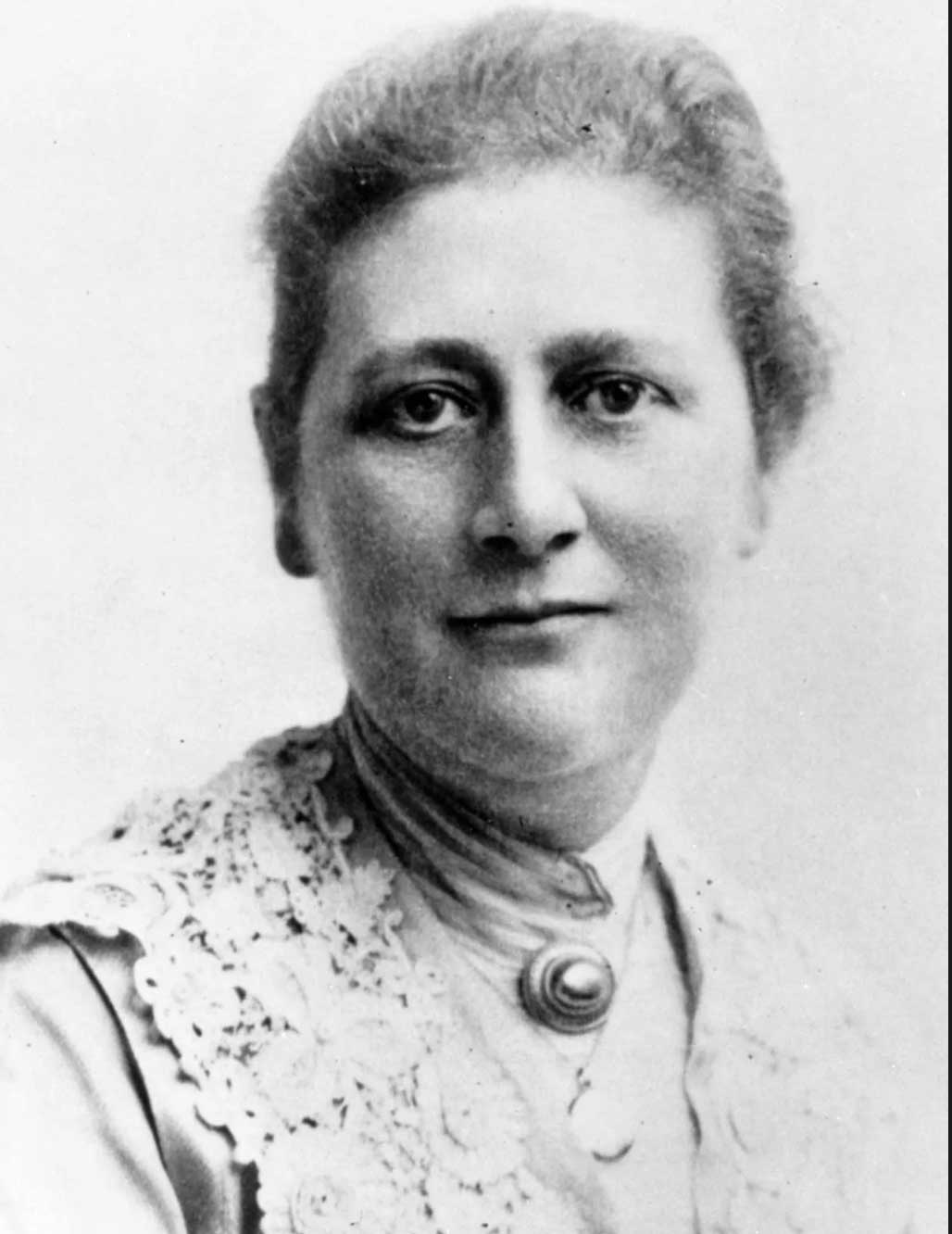
Illustrator, storyteller, and quiet naturalist of the English countryside
Though best known for her charming tales of Peter Rabbit and his woodland companions, Beatrix Potter’s earliest and most passionate work was in the field—literally. Growing up in a well-to-do but restrictive household in Victorian London, Potter spent much of her time exploring nature during family holidays in the Lake District and Scotland. There, she developed a habit of sketching fungi, flowers, animals, and landscapes with remarkable precision.
She kept illustrated journals and private sketchbooks filled with botanical studies and field notes. Her scientific drawings of fungi were so accurate that she was once considered for publication by the Royal Botanic Gardens at Kew—although, as a woman, she was not taken seriously at the time. Nevertheless, she continued to study and paint in secret, producing over 300 detailed mycological illustrations.
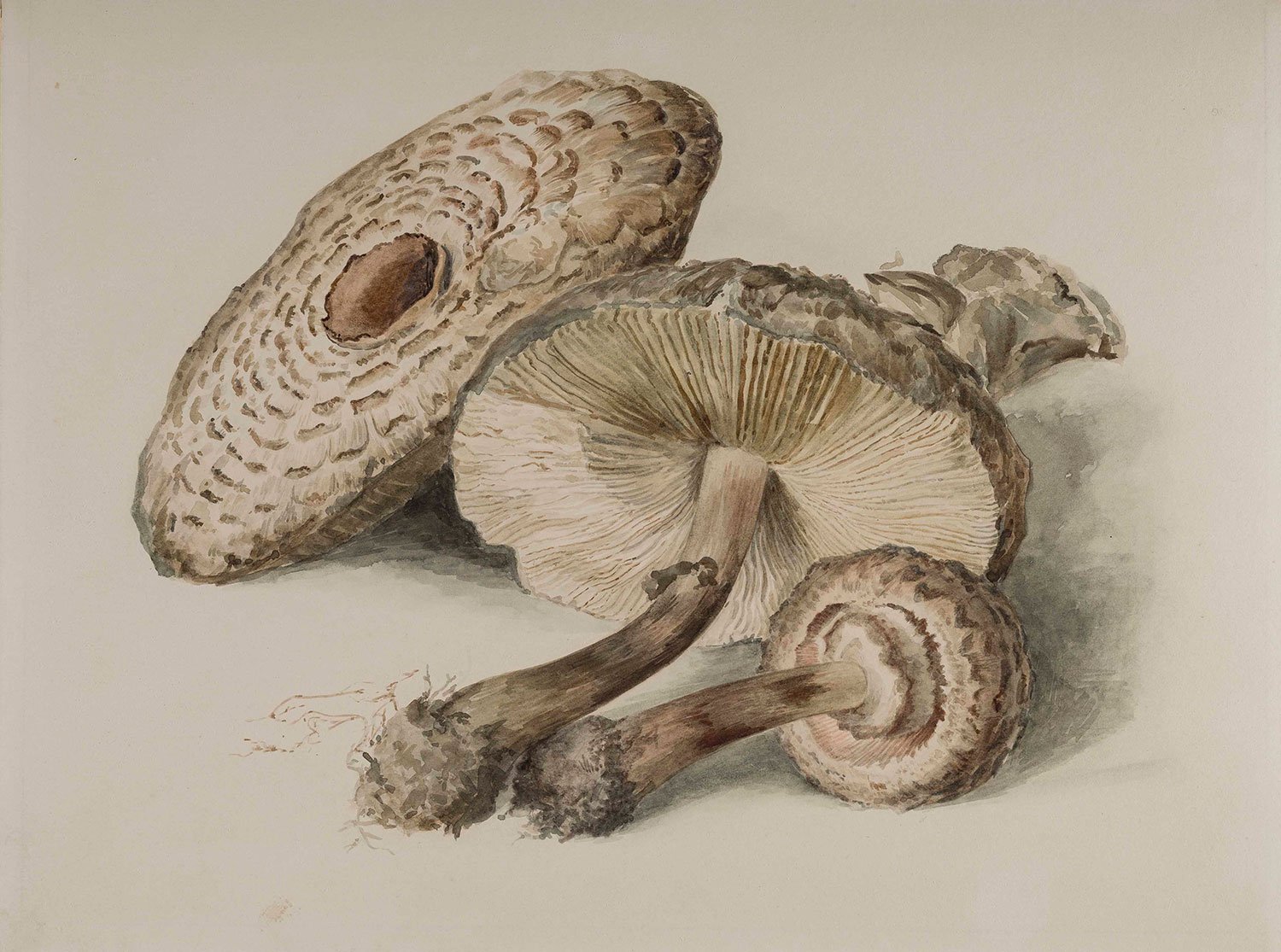
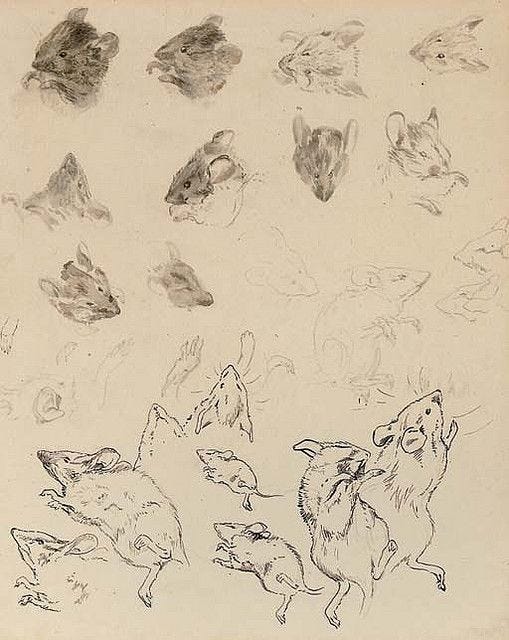
Eventually, her naturalist observations found a new outlet: storytelling. Her beloved children’s books, beginning with The Tale of Peter Rabbit, were deeply rooted in real environments and living creatures she had drawn from life.
Later in life, Potter returned to the land more fully. She became a conservationist, purchasing large tracts of farmland and eventually donating over 4,000 acres to the National Trust. Her field journals evolved from scientific study to stories, and finally, to land stewardship—each one a different form of devotion.
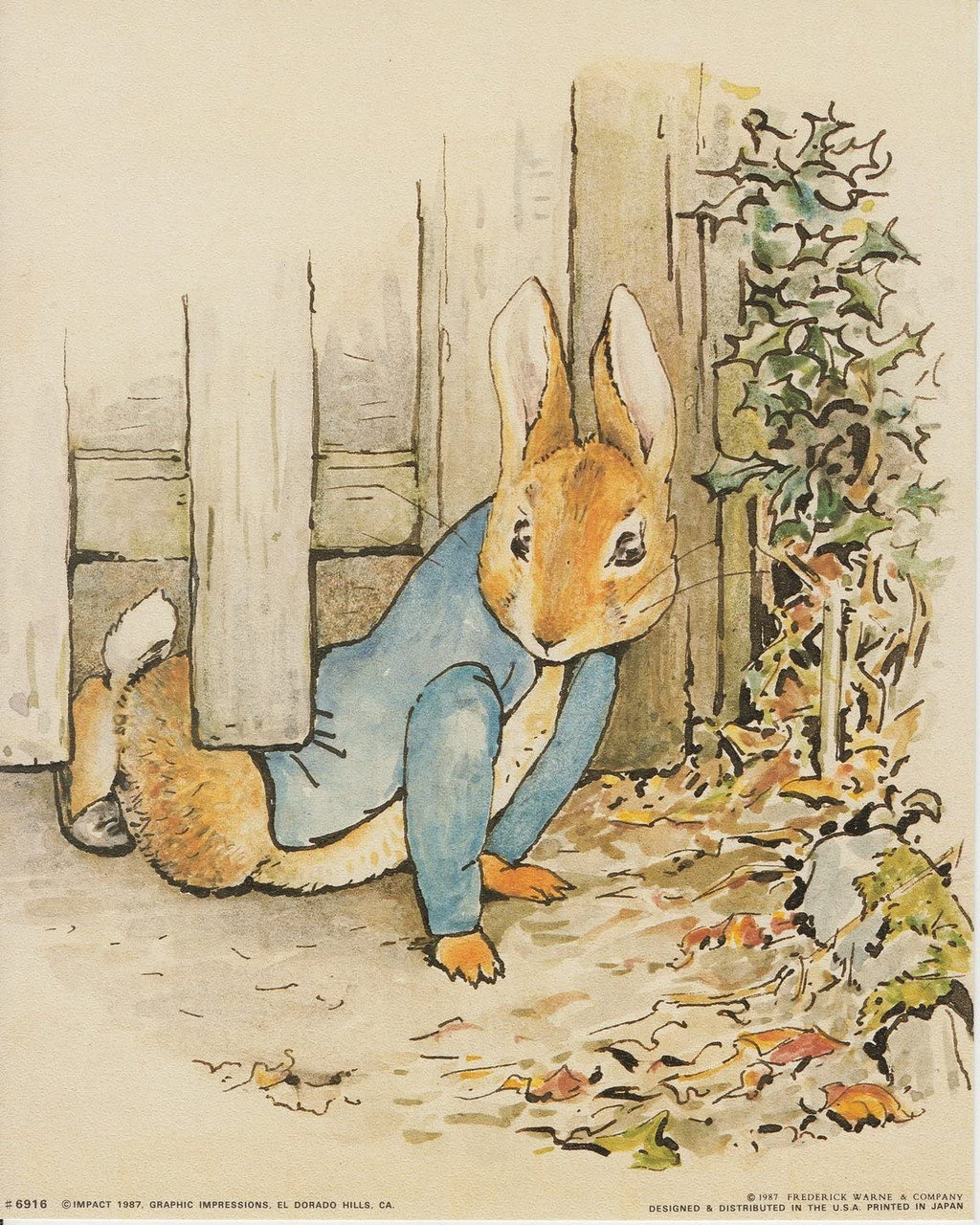
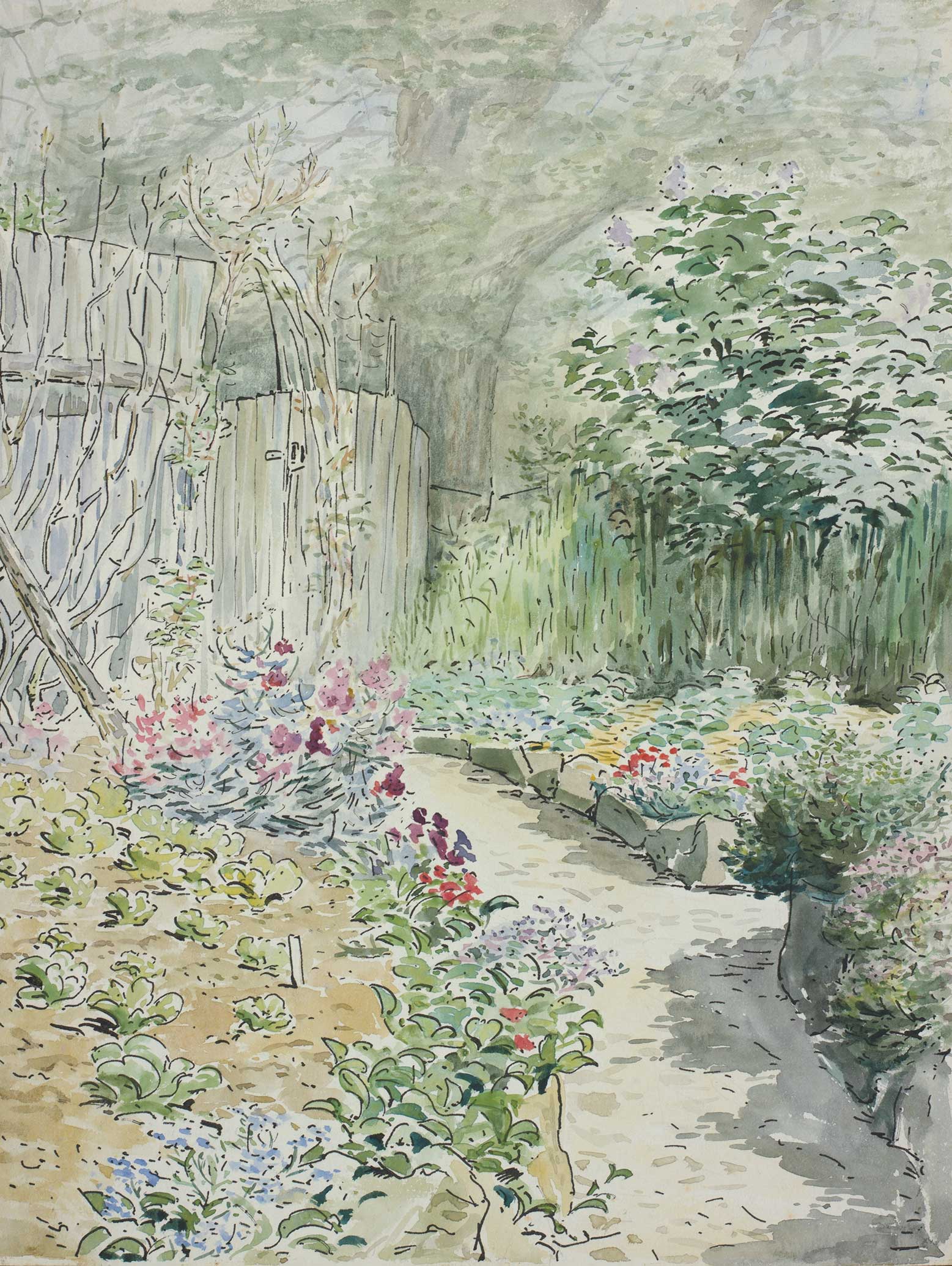
Potter shows us that observation can take many forms—scientific, narrative, and visual—and that art grounded in personal connection to place has enduring power. She reminds us that our sketchbooks don’t need to be perfect or public to be meaningful. They simply need to be ours.
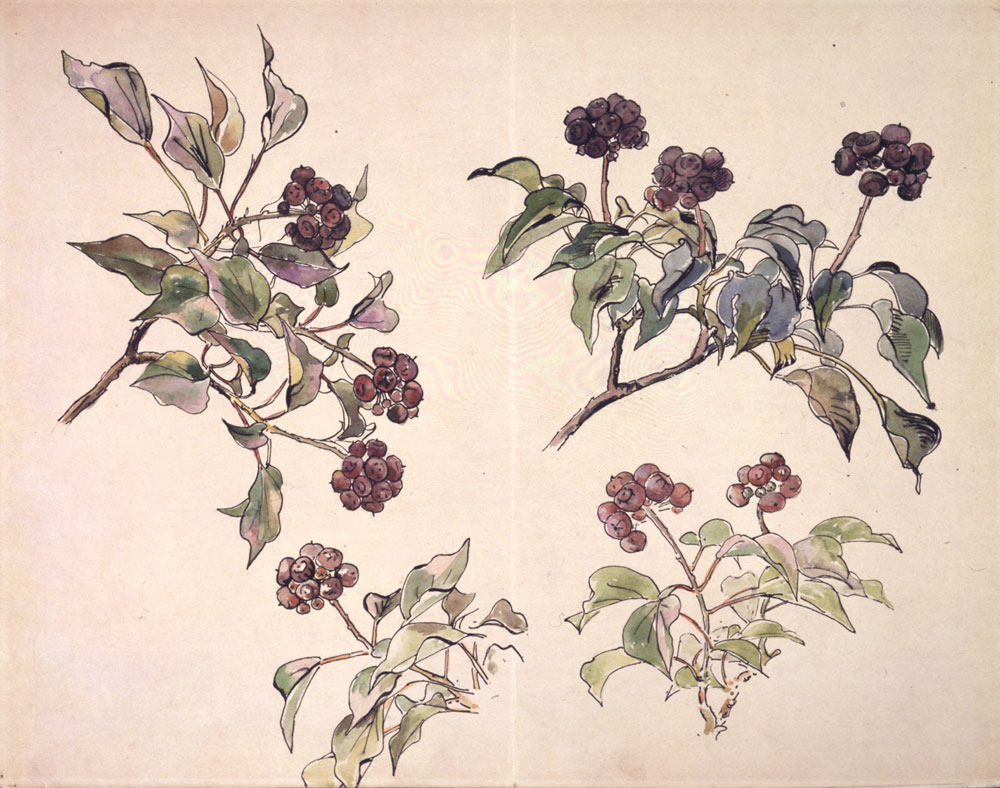
Both Maria Sibylla Merian and Beatrix Potter lived in times when women weren’t expected—or allowed—to be scientists, explorers, or even serious artists. But they made space anyway. With field journals in hand, they documented not only what they saw, but how they saw it: with clarity, devotion, and quiet courage.
Their work wasn’t loud. It didn’t demand attention. It invited it.
And that’s what field journaling is, at its core. A slow, attentive way of being in the world. A way of honoring the details. A sketch, a note, a swatch of color—as small as these may seem, they are acts of care. They are bridges between ourselves and the places we inhabit.
As we step into our own practice this month, we walk in the footsteps of these women—not just as artists, but as observers, explorers, and storytellers of the living world.
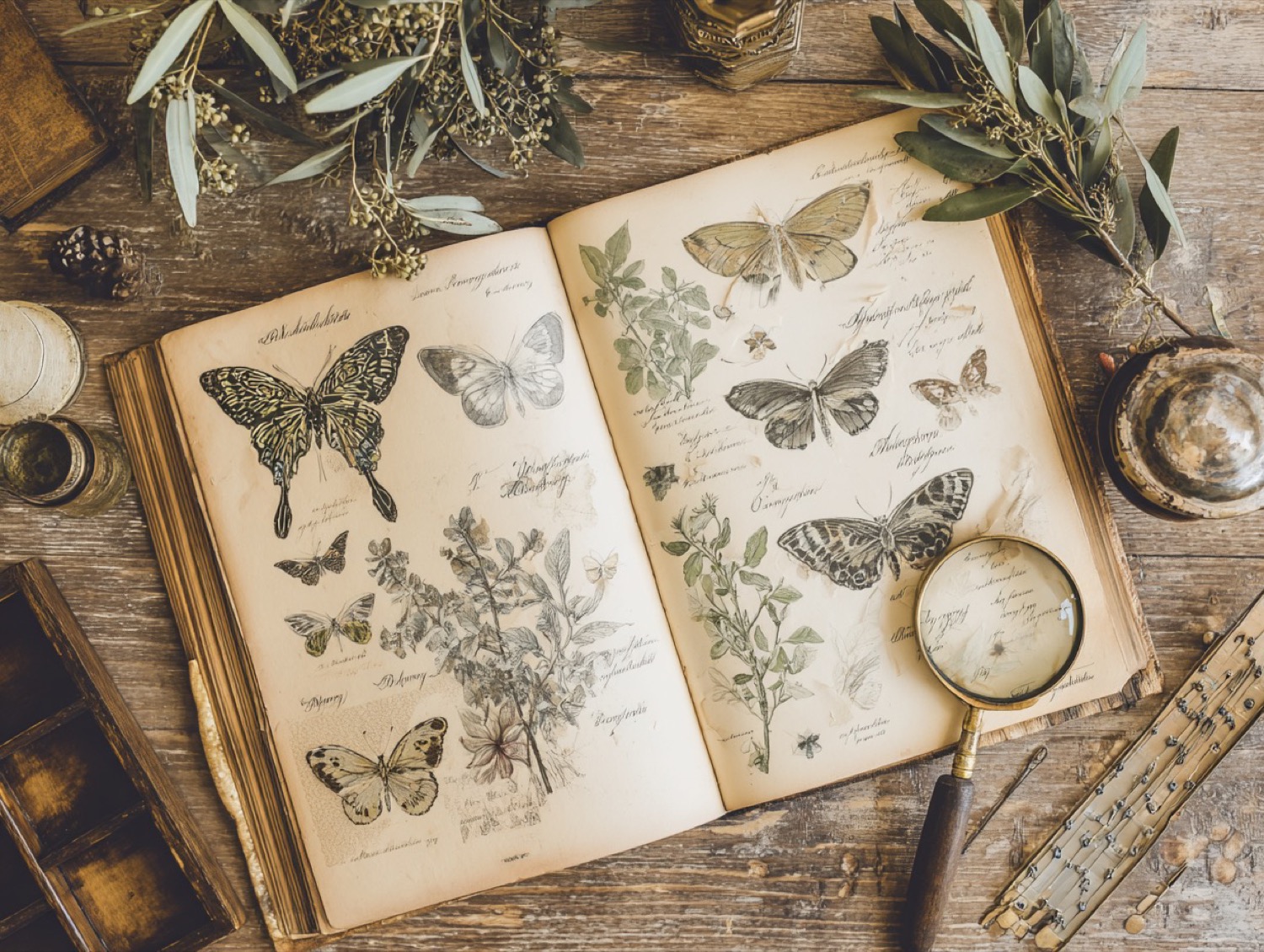
Field journaling isn’t just about drawing what’s in front of you—it’s about *paying attention* in a way that deepens your experience of a place. It’s about letting the page become a record of not just what you saw, but what it meant to you in that moment.
The women artists we’ve studied this month—Maria Sibylla Merian and Beatrix Potter—didn’t just observe. They recorded. Thoughtfully. Precisely. Creatively. They used sketchbooks as tools of understanding. And you can, too.
Here are a few techniques drawn from both historical and contemporary field journaling practices. Think of them not as rules, but as gentle prompts—ways to make your journal entries more alive, more useful, and more *yours*.
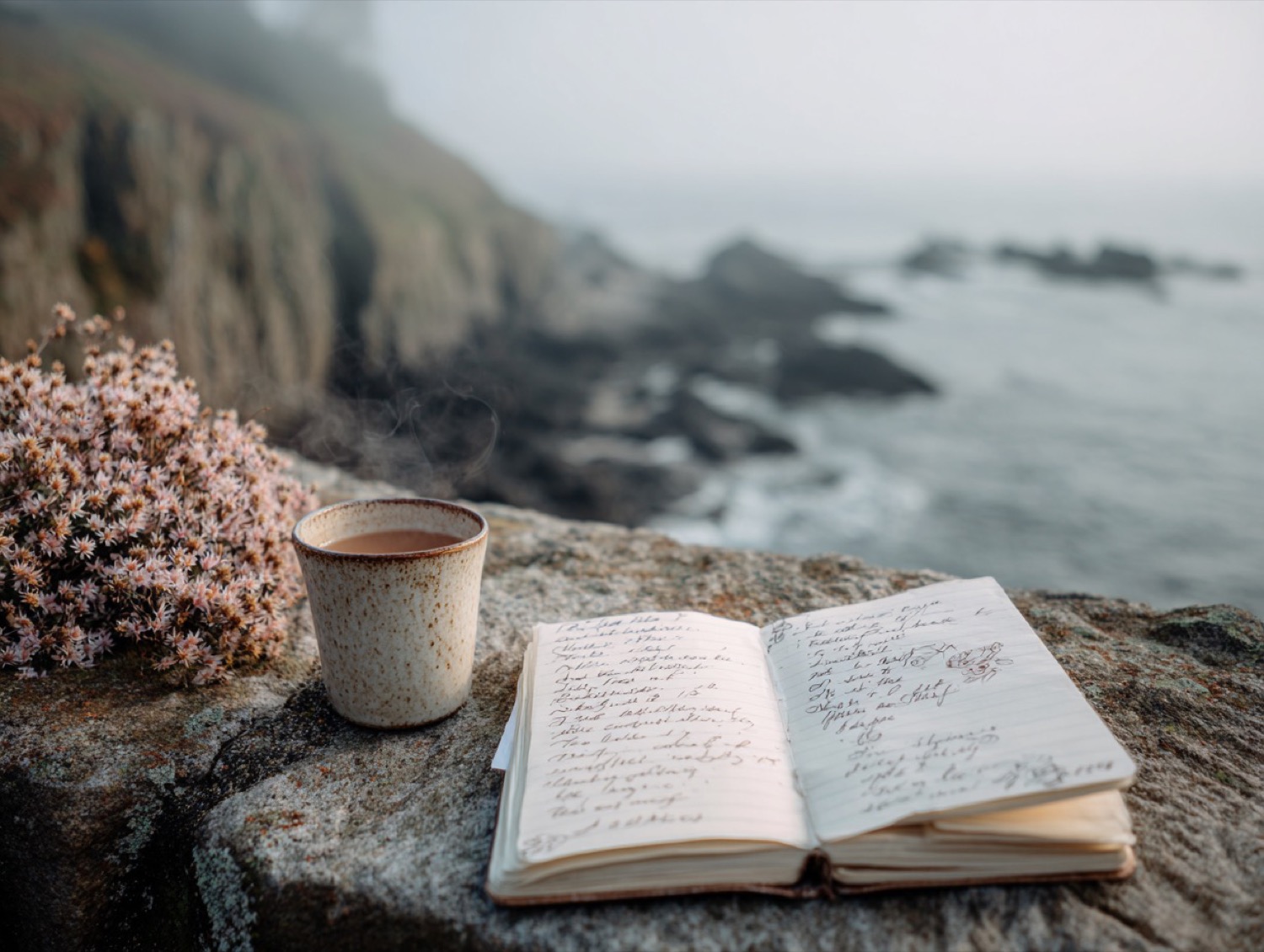
A simple heading grounds the entry in time and space. You don’t need a whole paragraph—just a few notations.
• Date: June 14, 2025
• Time: 8:15 AM
• Location: Cliffside path, Western Ireland
• Weather: Misty with low clouds, ocean scent strong
Recording this sets the tone for what follows. It marks the experience as real and rooted.
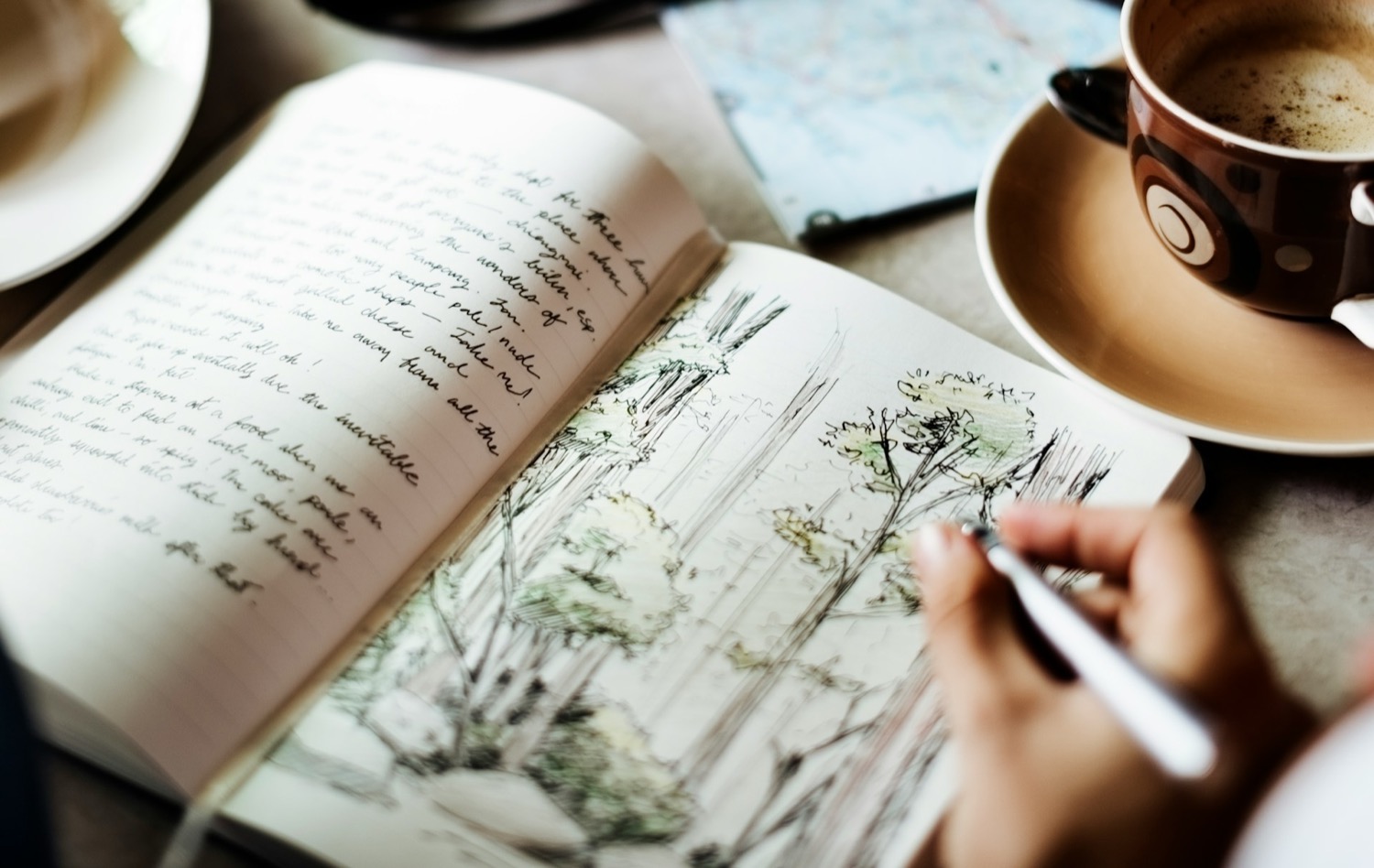
You don’t have to capture the whole scene. Start with what *calls your attention*—a gnarled pine trunk, the pattern on a rock, the delicate bend of a dried stem.
Use small drawings, even if rough. Think of them as visual notes—glimpses, not full compositions. Let imperfection be part of the charm.
• Try: drawing one object from two angles
• Try: cropping your subject—just a corner of a leaf, or one branch of a tree
Some things don’t translate visually. That’s where your words come in.
Use descriptive phrases to record sensations, associations, or behaviors you observe.
The wind pressed low through the grasses like a quiet hush.”
Two butterflies circled each other, landing and lifting again.”
“Smells faintly of salt and figs.”
Let the writing be casual and intuitive—no need to overthink. You’re not writing a report. You’re creating a memory.
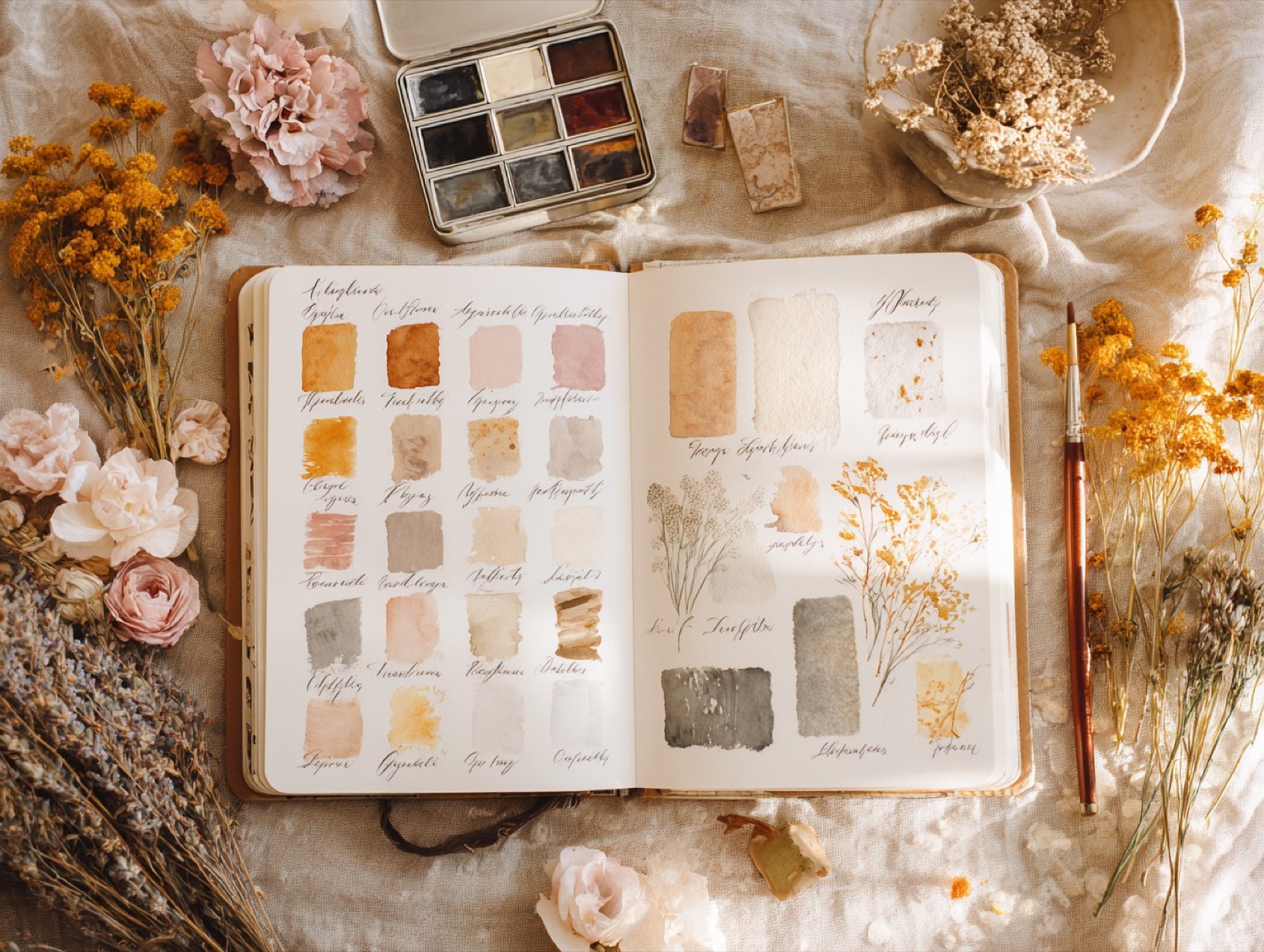
Instead of trying to match colors exactly, create a small swatch or mix and name it for how it feels.
• “Lichen Grey”
• “Sun-warmed Ochre”
• “Faded Terracotta from Wall by the Gate”
These poetic labels help you return later, not just to the look of something, but to the feeling of it.
One of the most powerful uses of a field journal is to watch your *own response* to the world.
Try this gentle practice:
• I notice... (something specific)
• I wonder…(something curious)
• It reminds me of…(something personal)
Example:
• I notice the underside of the fig leaf is almost silver.
• I wonder if that’s what gives the trees their shimmer from far away.
• It reminds me of the pages in my grandmother’s photo album—velvety and quiet.
This turns observation into reflection. It creates depth.
Your journal doesn’t need to be finished or polished. It doesn’t have to be shared. It just has to be honest. The goal isn’t documentation—it’s connection. With place. With presence. With your own way of seeing.
So the next time you head out with your sketchbook, consider adding not just drawings, but context. Curiosity. Color. And care.
Because field journaling isn’t just a practice—it’s a conversation between you and the living world.
Enjoy.
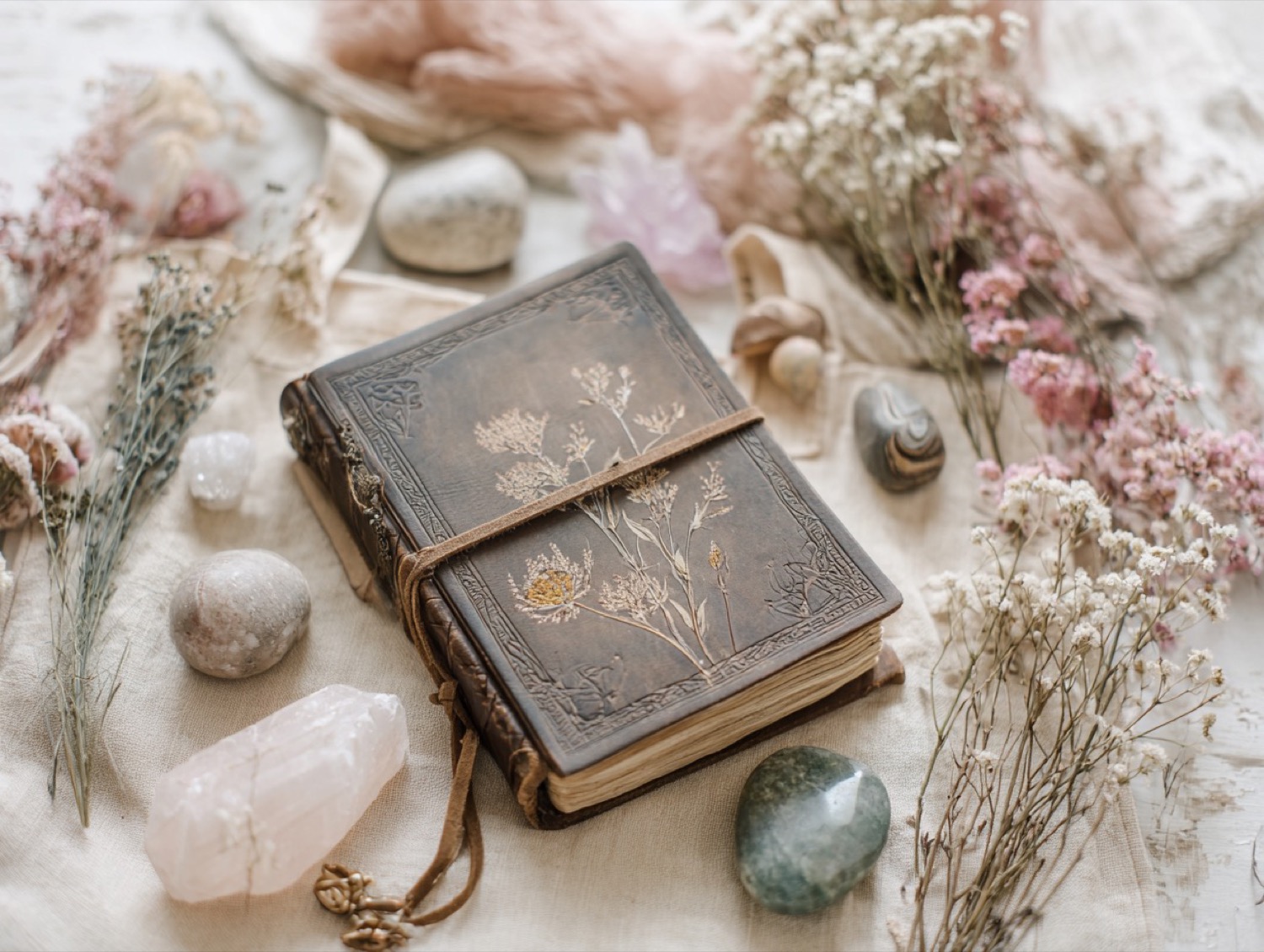
Medium: Pen, pencil, or watercolor
Time: 15 minutes
Find a quiet spot—outside if possible, but a windowsill or porch will do. Set a timer for 15 minutes. Let yourself be still. Look around slowly until something catches your attention: a leaf, a stone, a shadow. Don’t overthink it.
Draw what you see with as much care as you can give it in the moment. Add a few small notes—what do you hear? Smell? Feel on your skin?
Try:
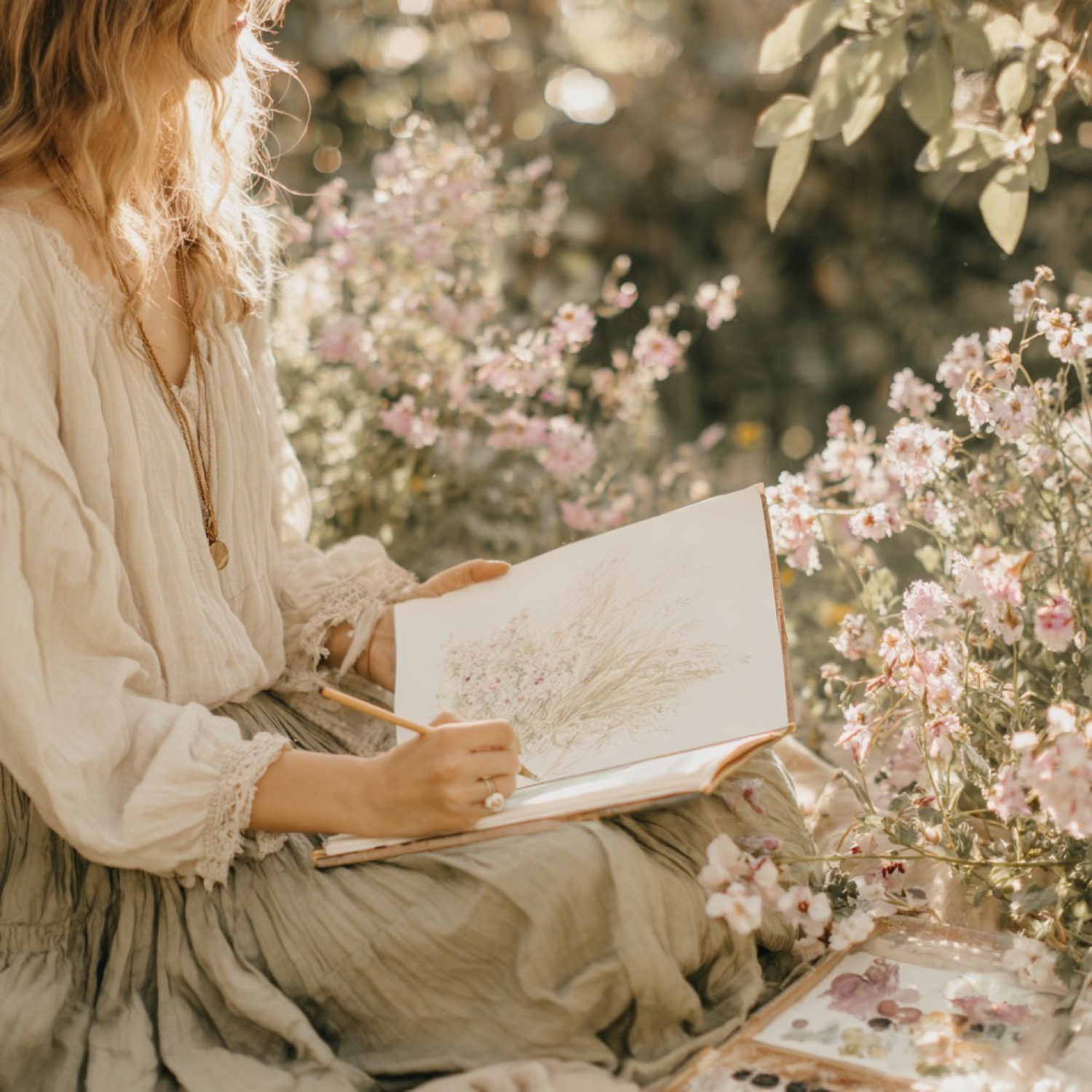
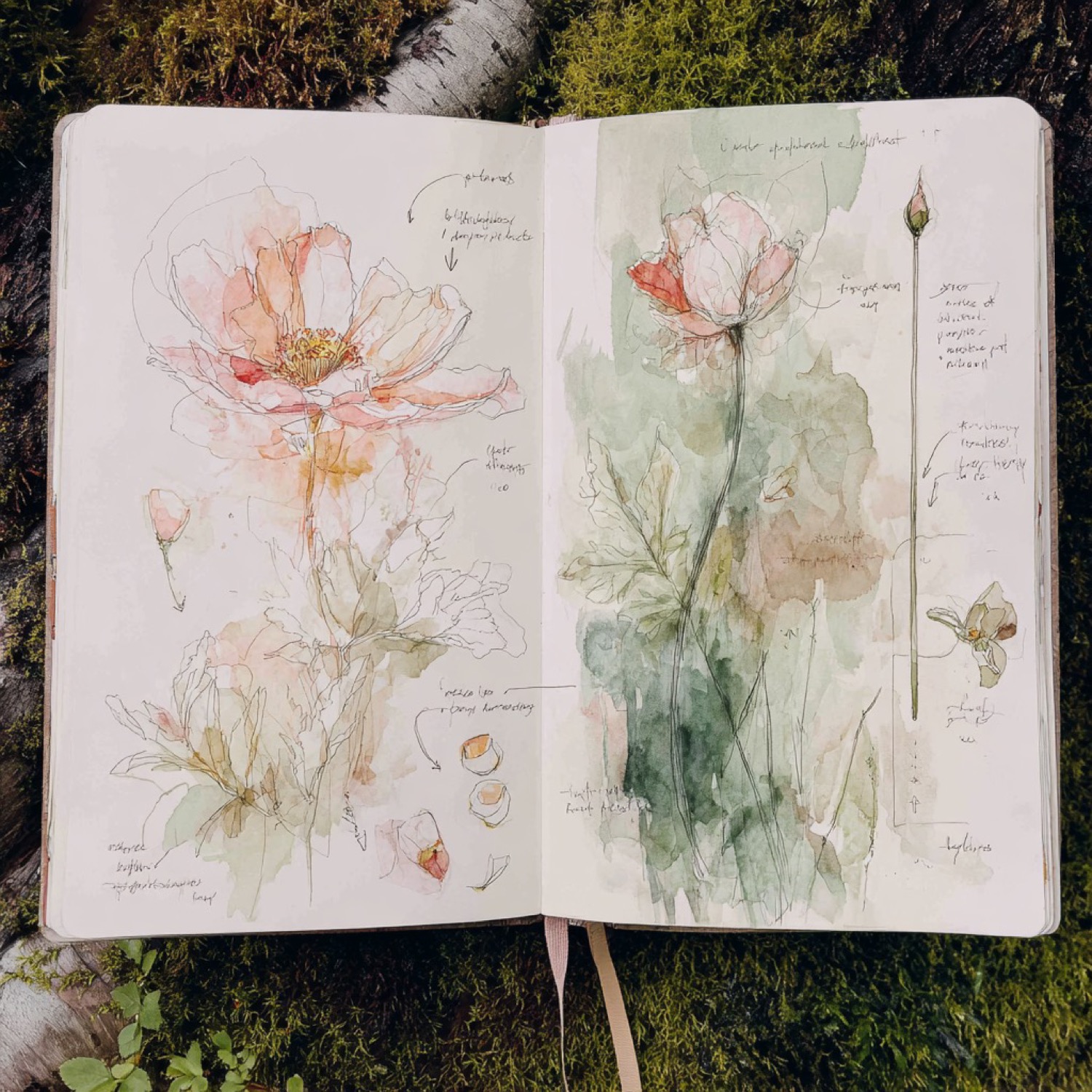
Medium: Pencil and watercolor or ink
Time: Ongoing over several days
Choose something that changes: a flower blooming, a fruit ripening, a seed sprouting, even the sky across one day. Create a sketchbook spread that tracks its transformation. Come back to the same subject at different times and add small drawings in sequence.
Include notes, arrows, or tiny swatches of color to tell the story of change.
Try:
Medium: Pen, pencil, or mixed media
Time: 20–30 minutes
Find a small natural subject—a leaf, mushroom, seed pod, or flower—and draw it close-up. Get curious. Let your pencil follow the curves and texture with care. Do a little research and find the latin name and some information on this beautiful living element.
Try:
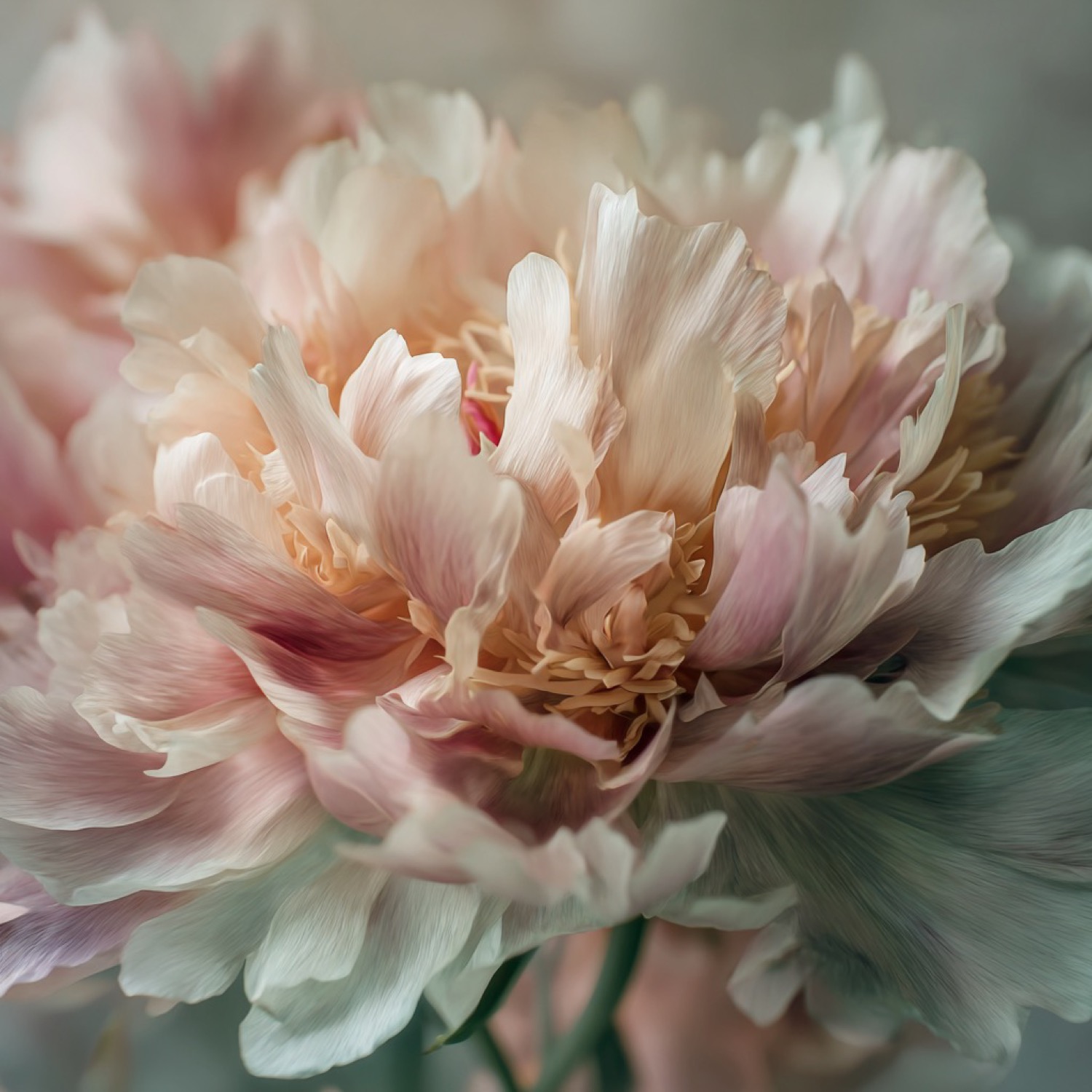
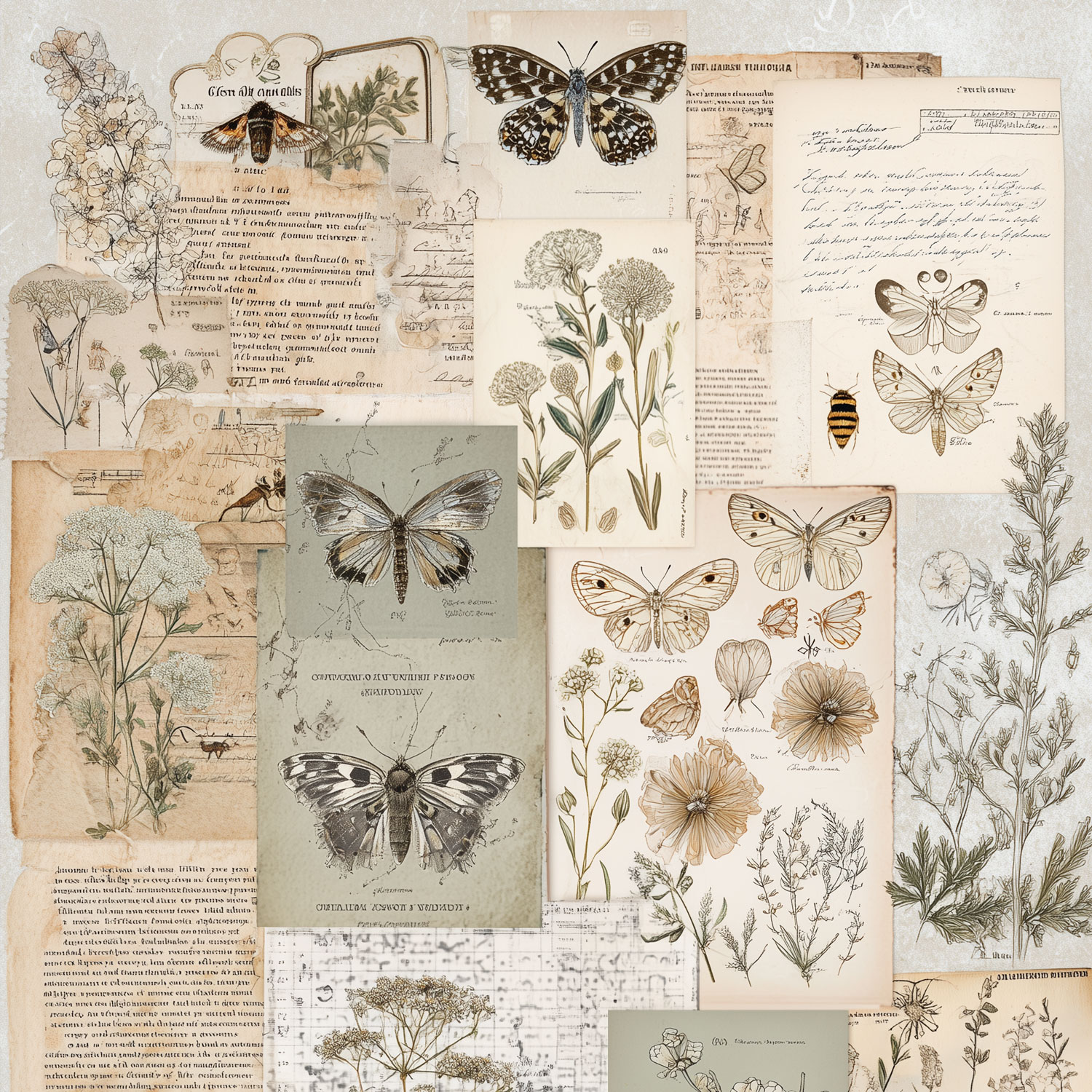
I’ve curated some fun collage sheets that you can use in your field journals & sketchbooks. Feel free to print these out and use them how you like.
This month’s featured class, Into the Wild, is a gentle companion to our Journal’s theme of slowing down and sketching what you see. Taught by Monica Stadalski, this watercolor journaling course invites you to blend ink, paint, and simple observation into meaningful pages that capture your connection with the natural world.
Whether you’re sketching from a trail, a garden, or your own window, this class is a beautiful way to let your surroundings speak through your art.
You can also listen to this month’s issue of the Studioworks journal. I find I love listening to books, podcasts and music while I draw, paint or go on a long walk. Enjoy.
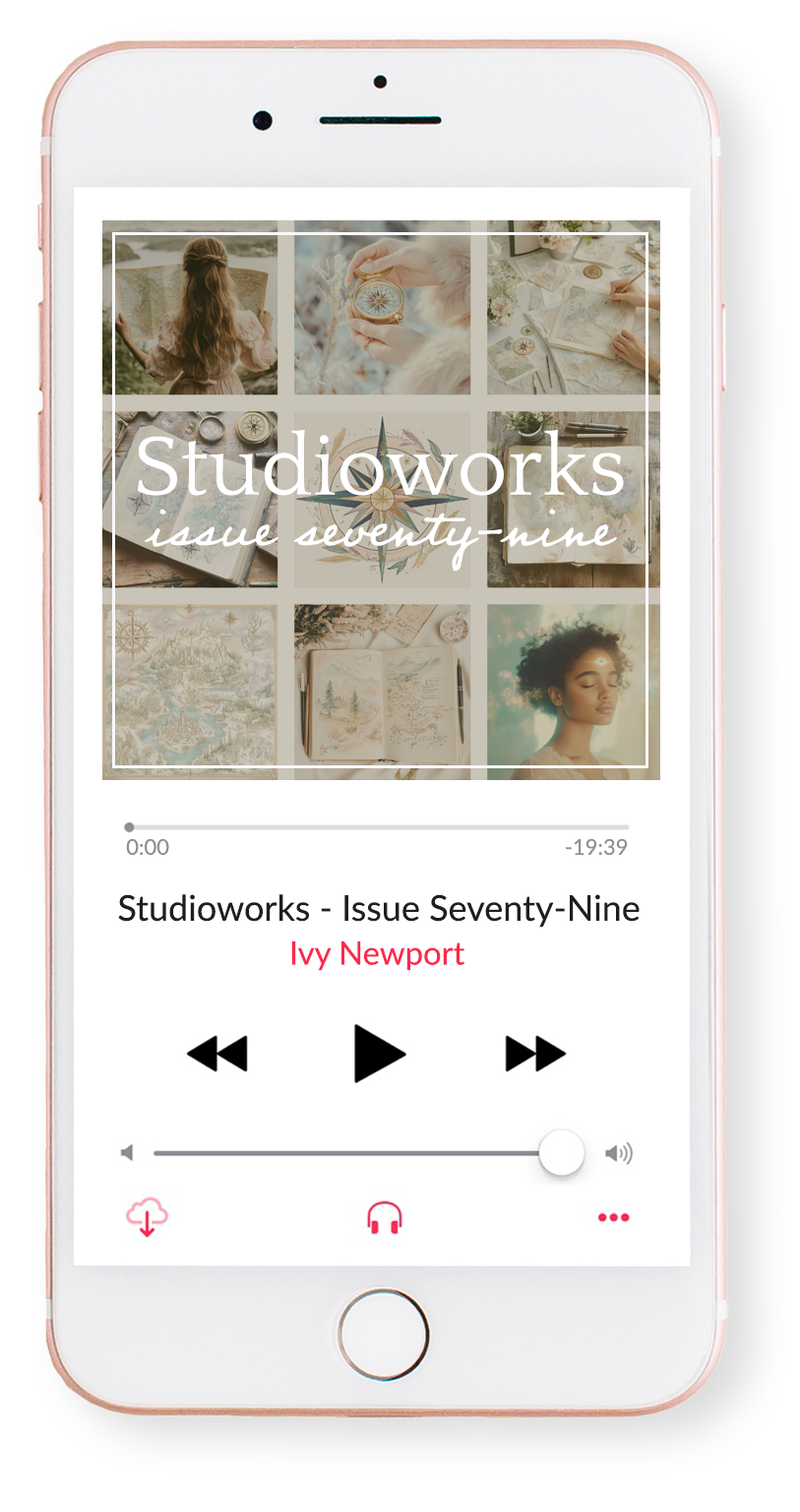
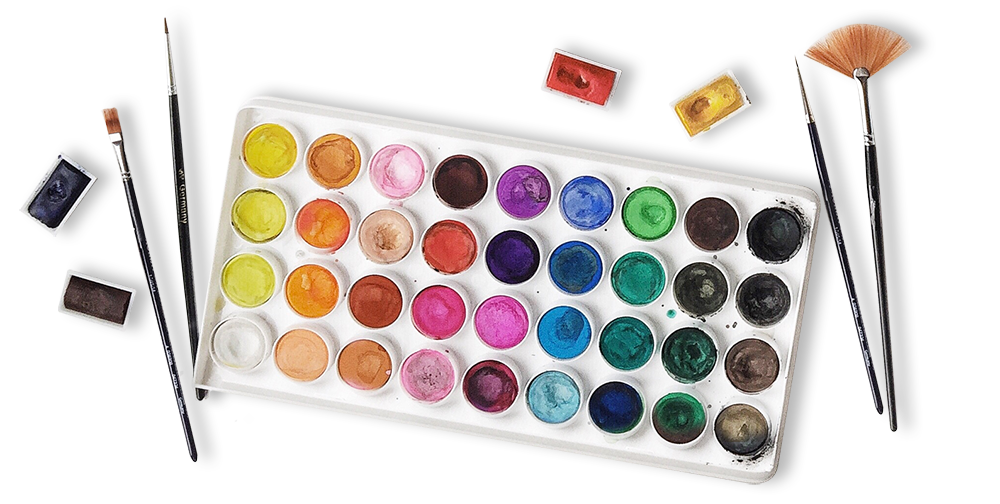
One of my favorite things to do is to curate inspiration. From Pinterest boards to books, resources, playlists and more - I love to share anything that might facilitate learning, expansion, and sparks of curiosity! Being an artist, we naturally crave these things so here are some of this month’s picks from me to you.
I had so much fun curating this list. I hope you enjoy!!
Classes that pair well with this month’s theme in your Studioworks Creative Library